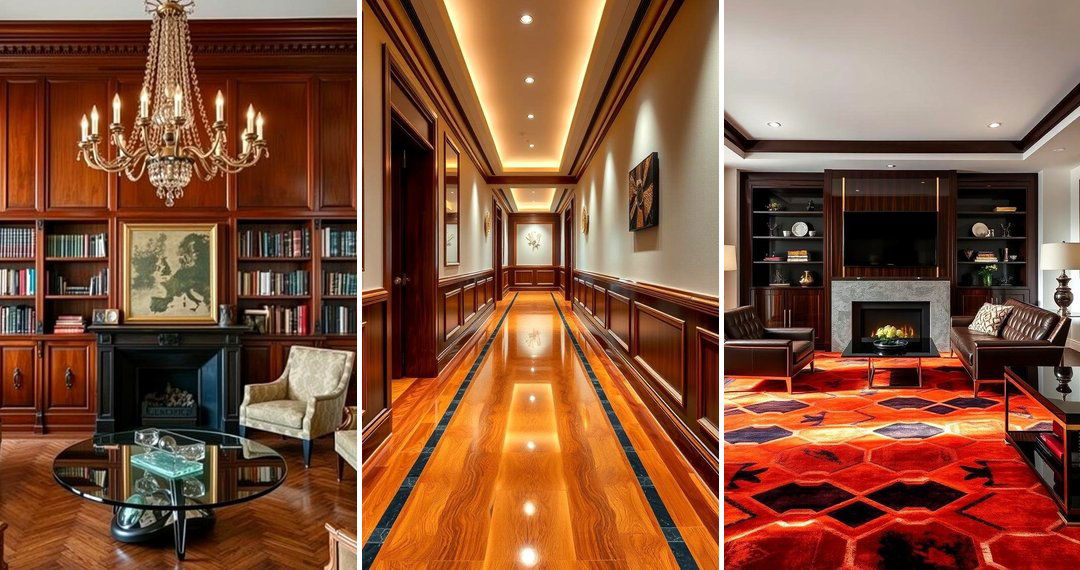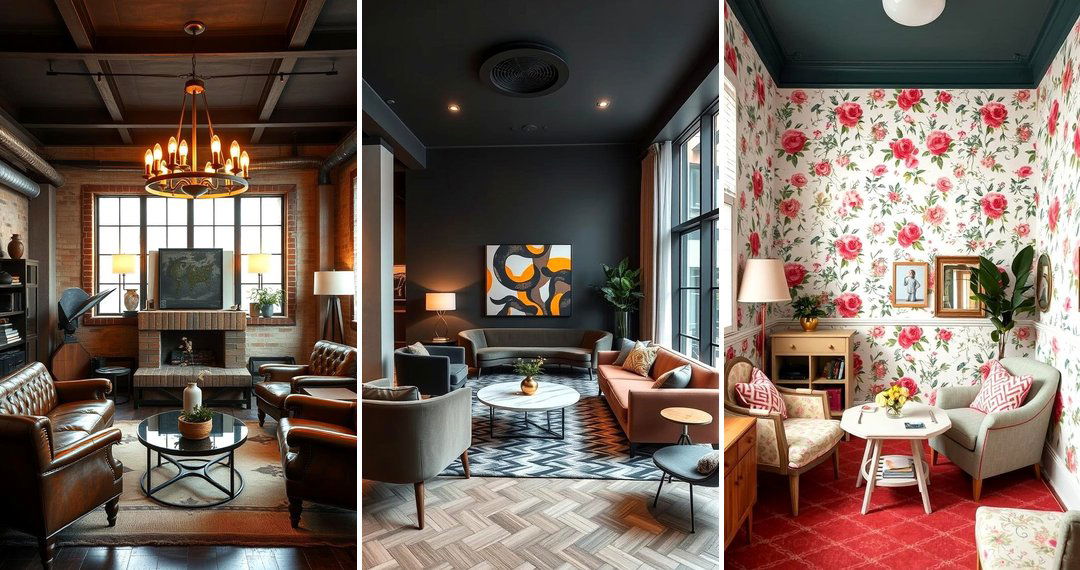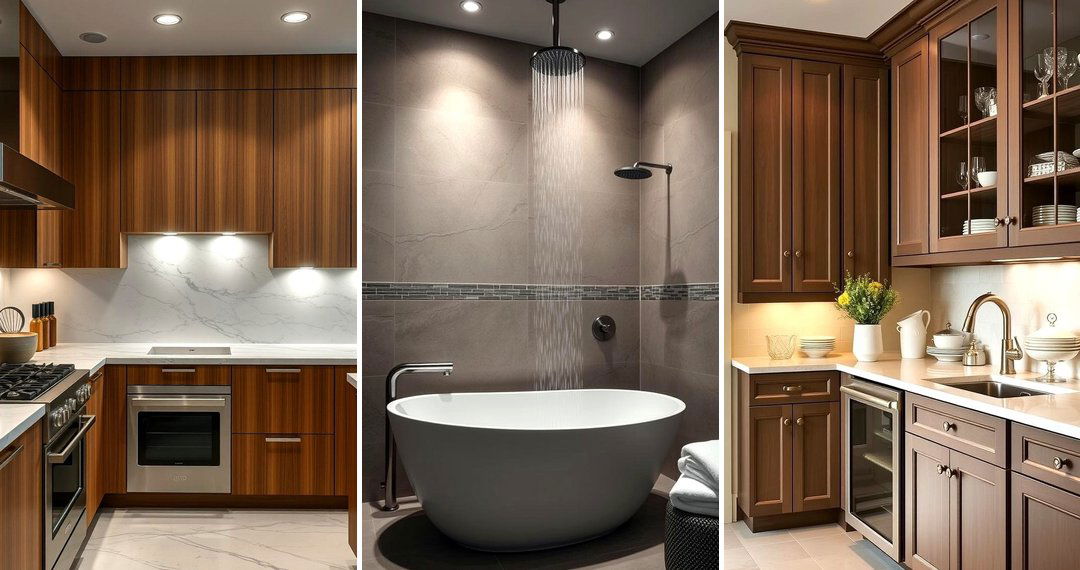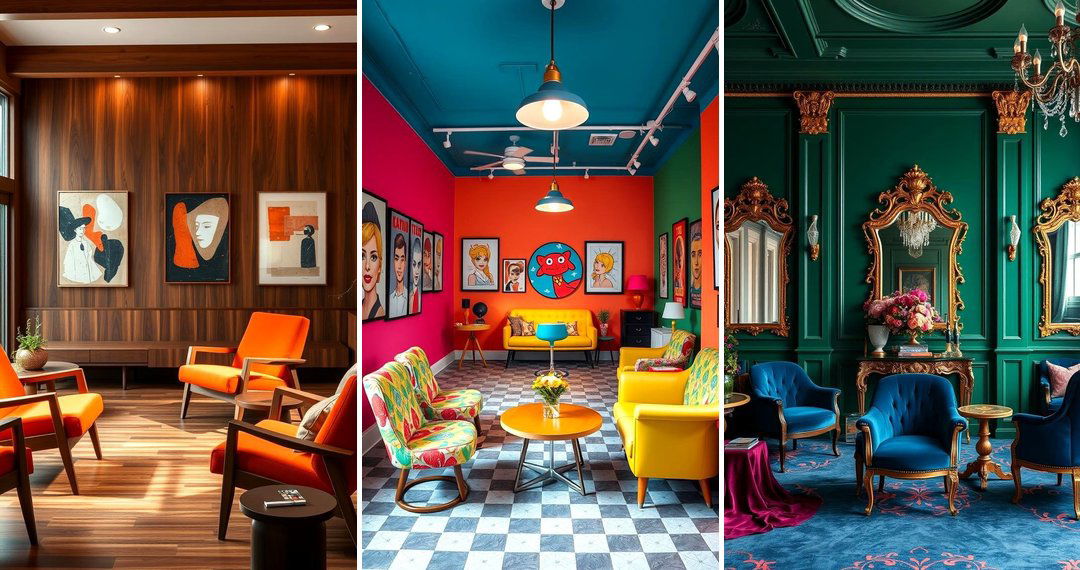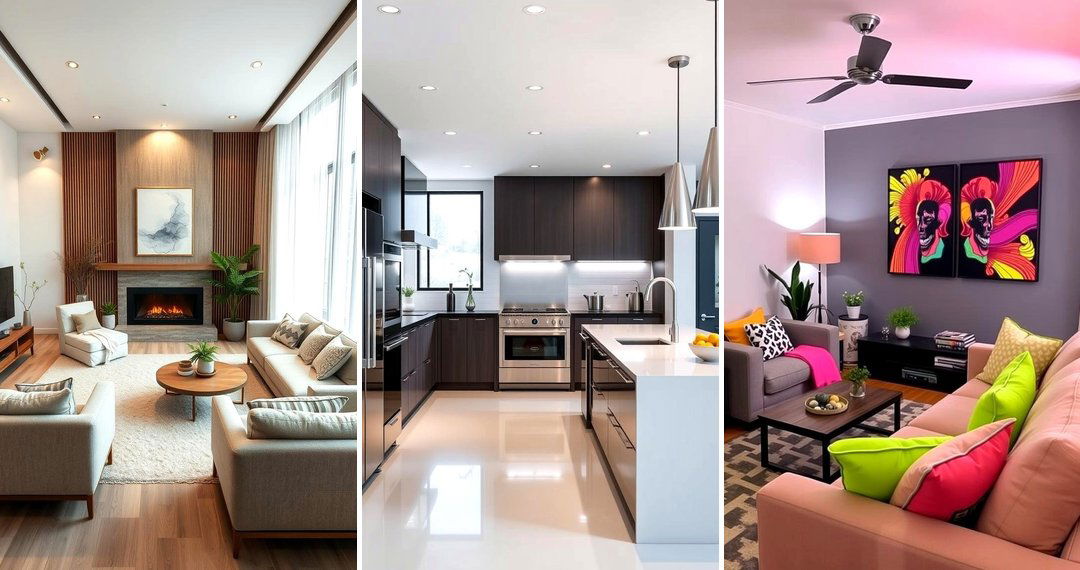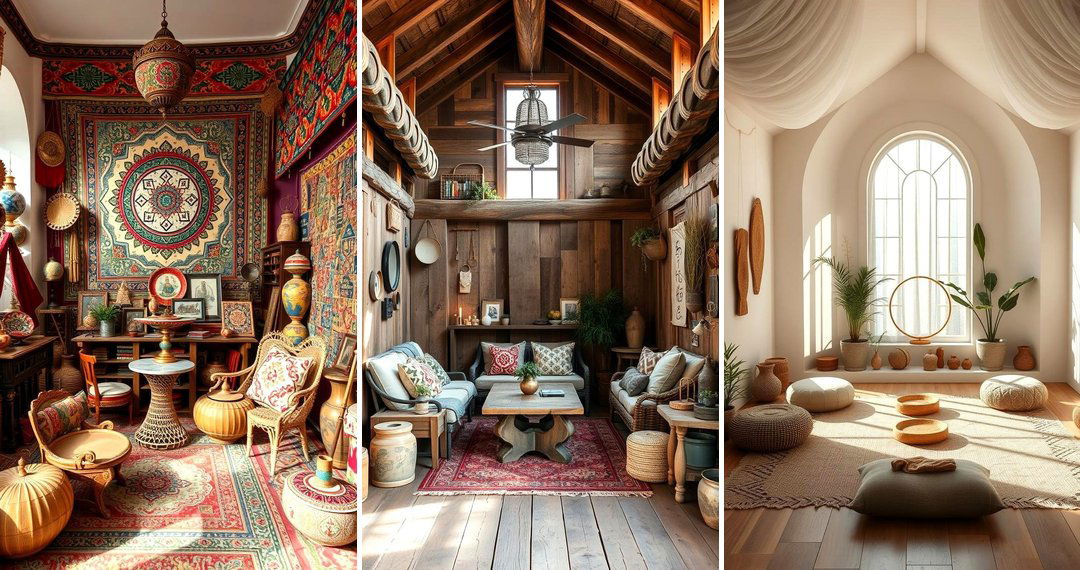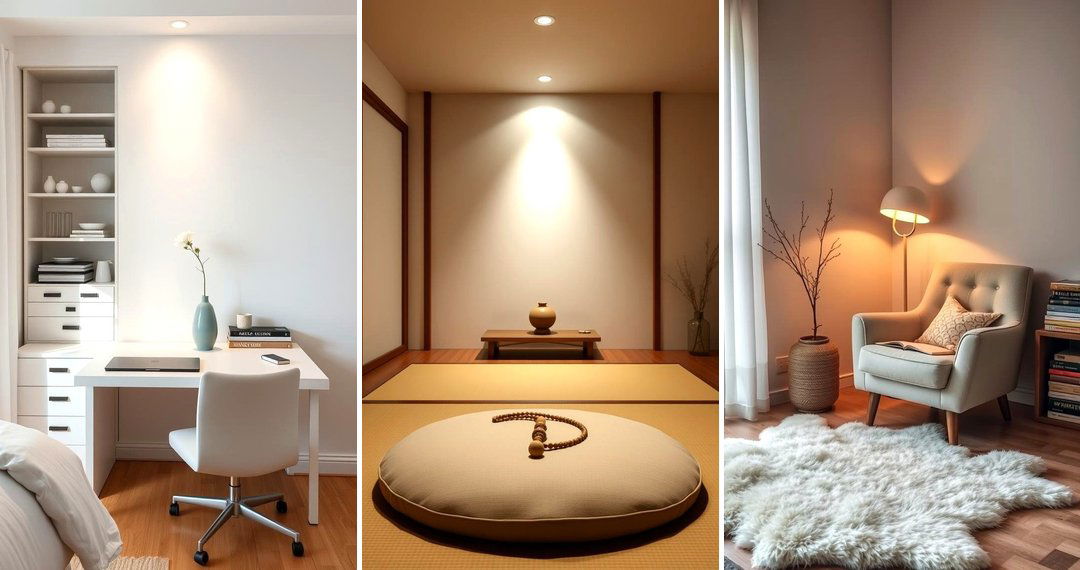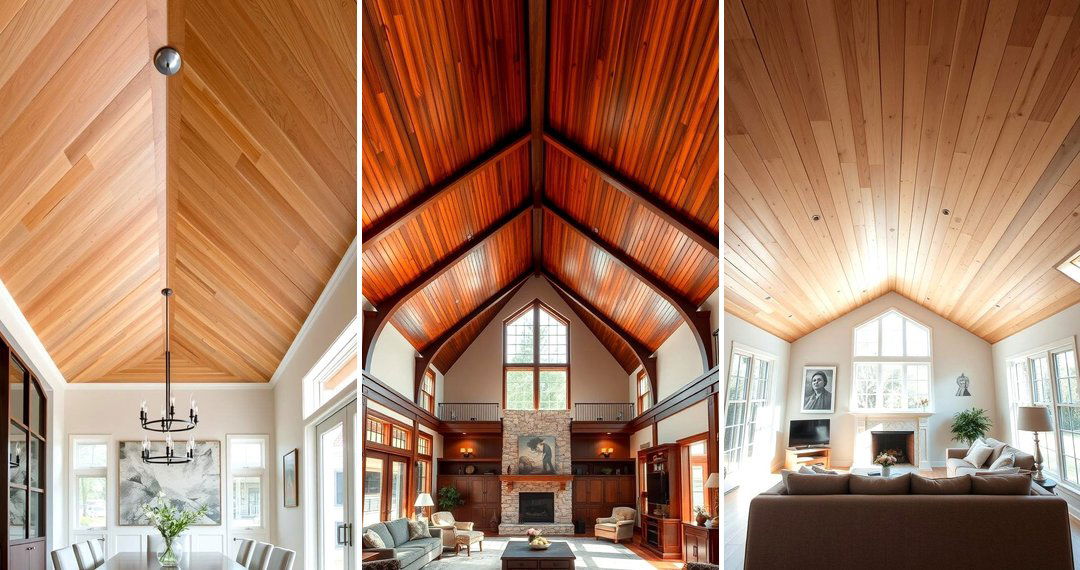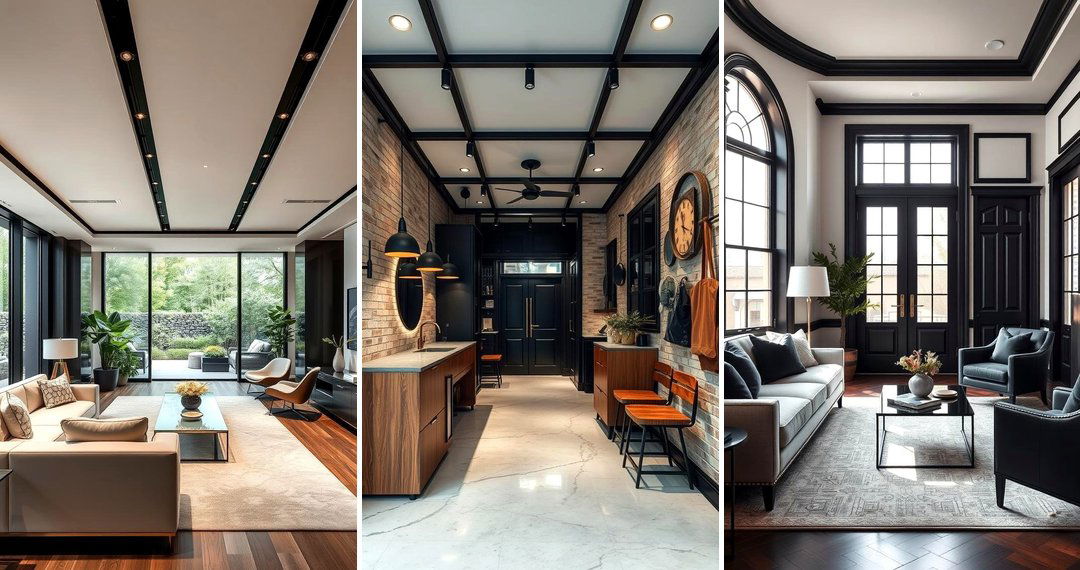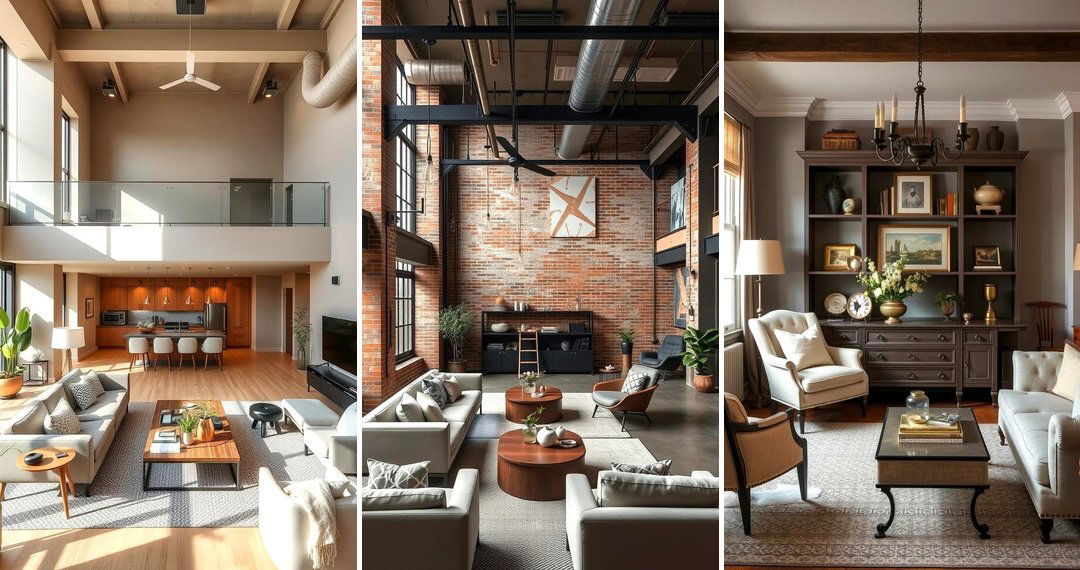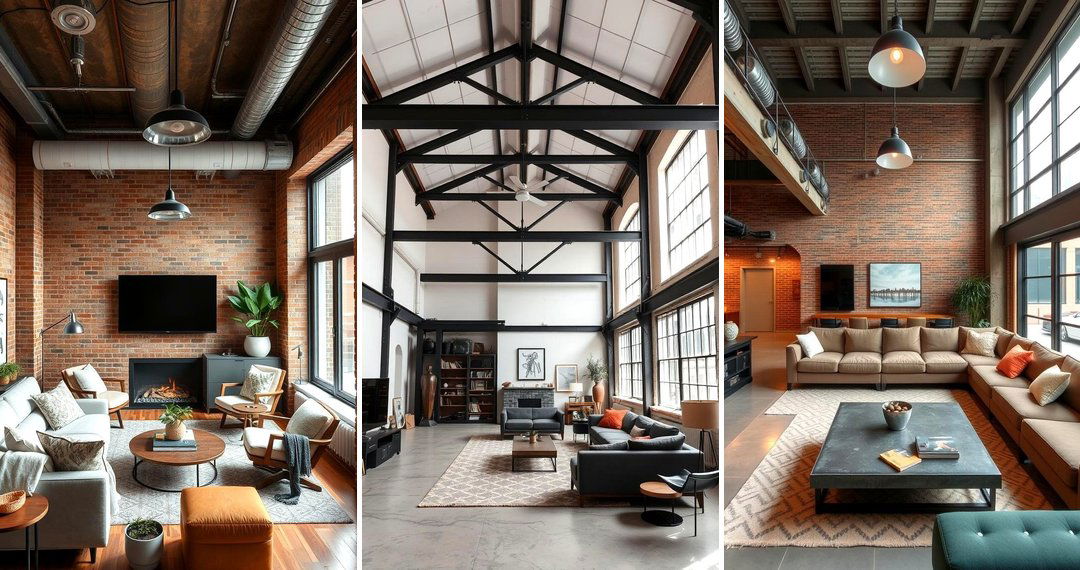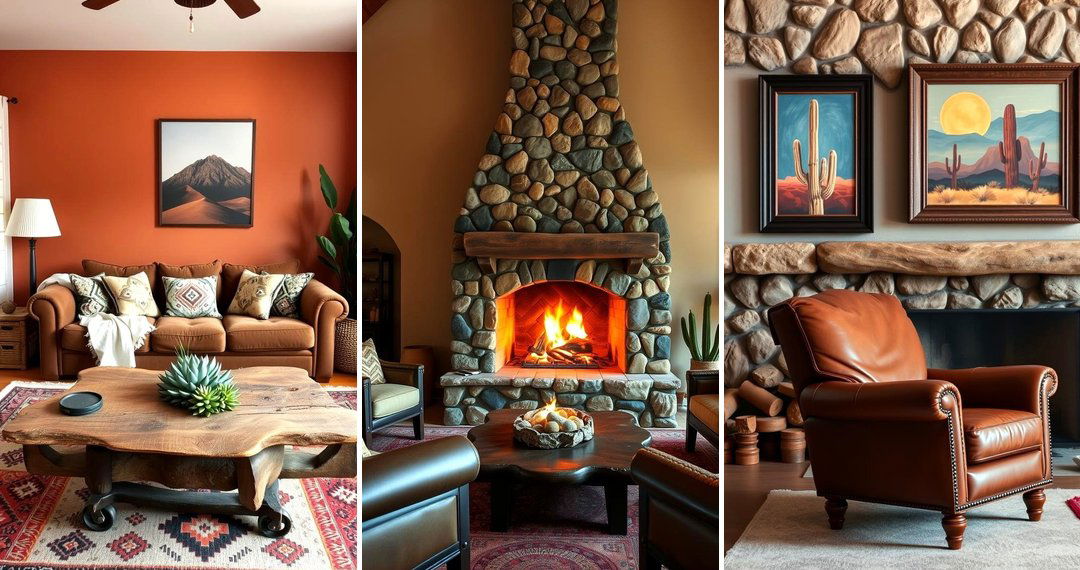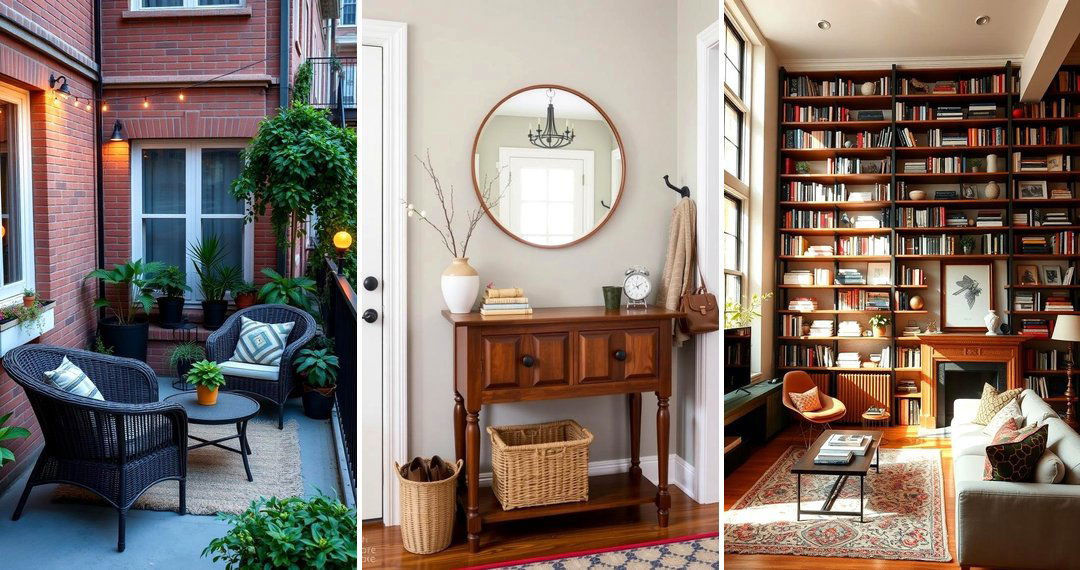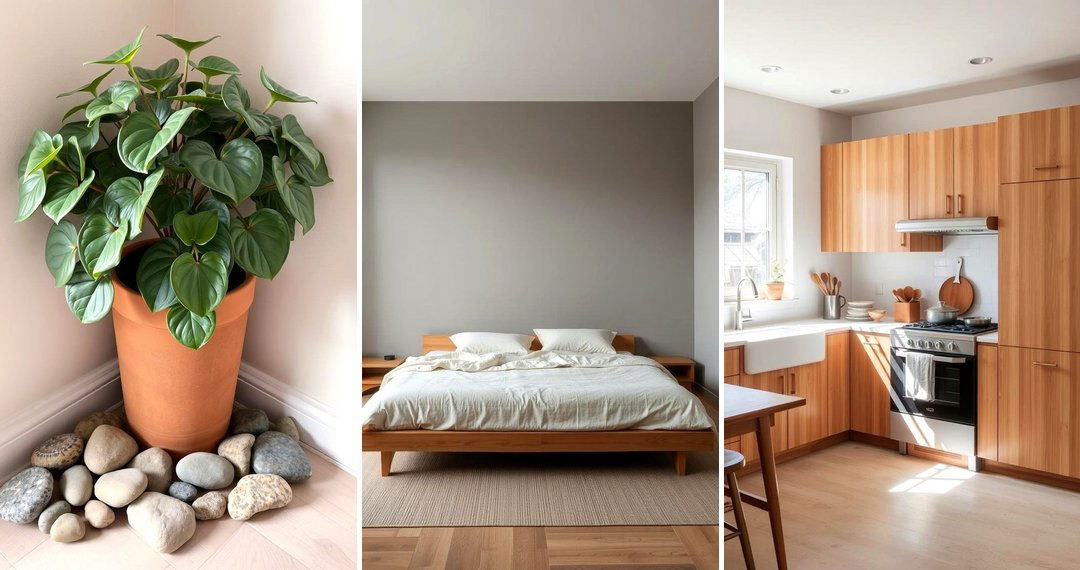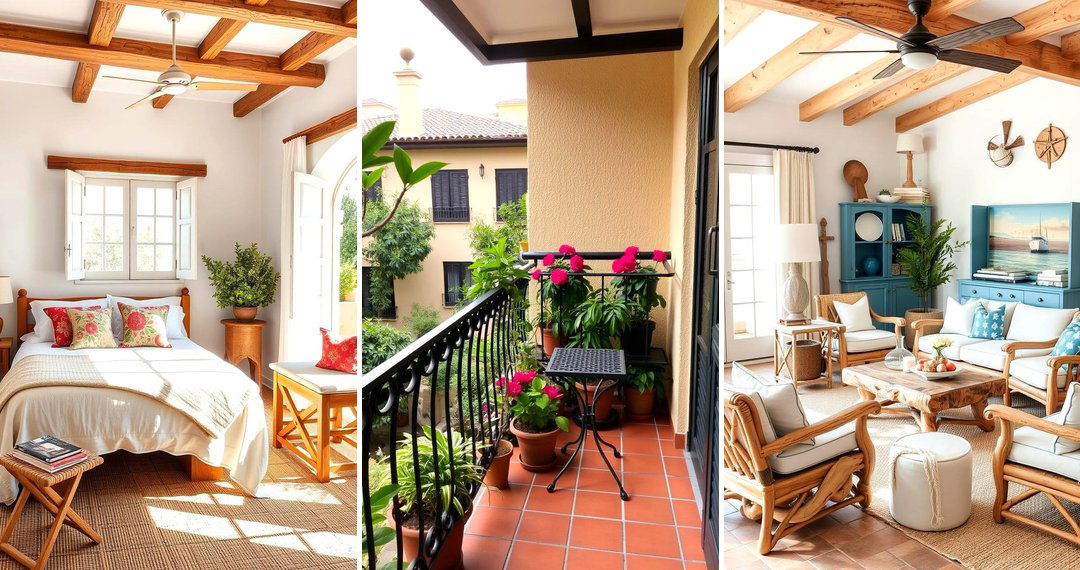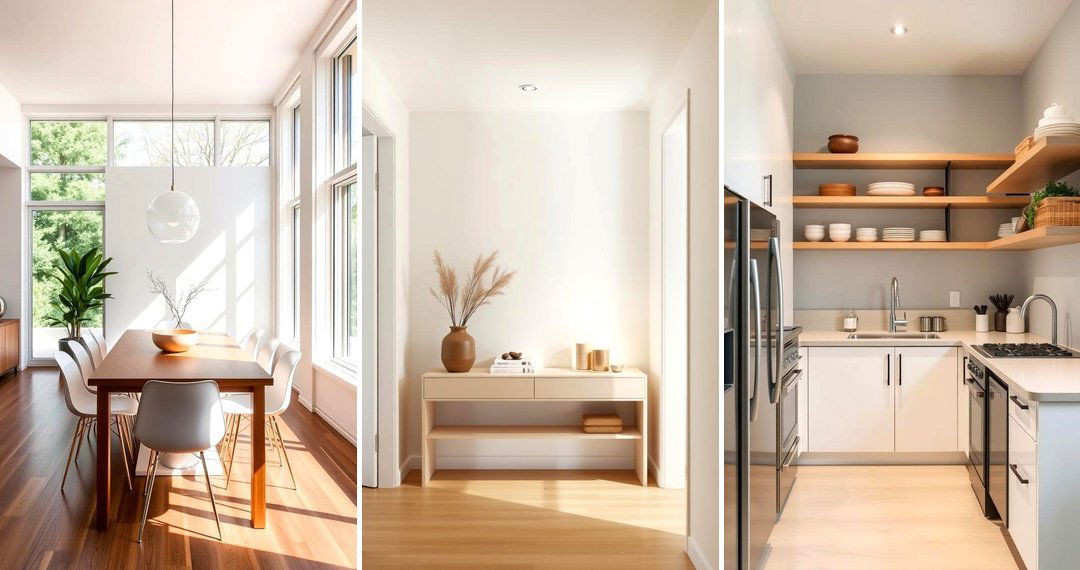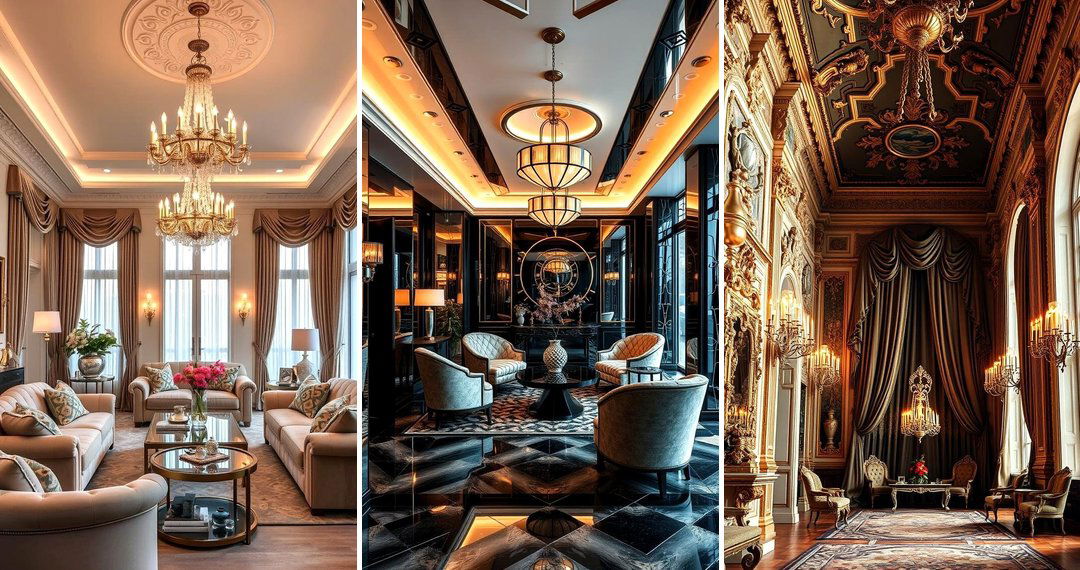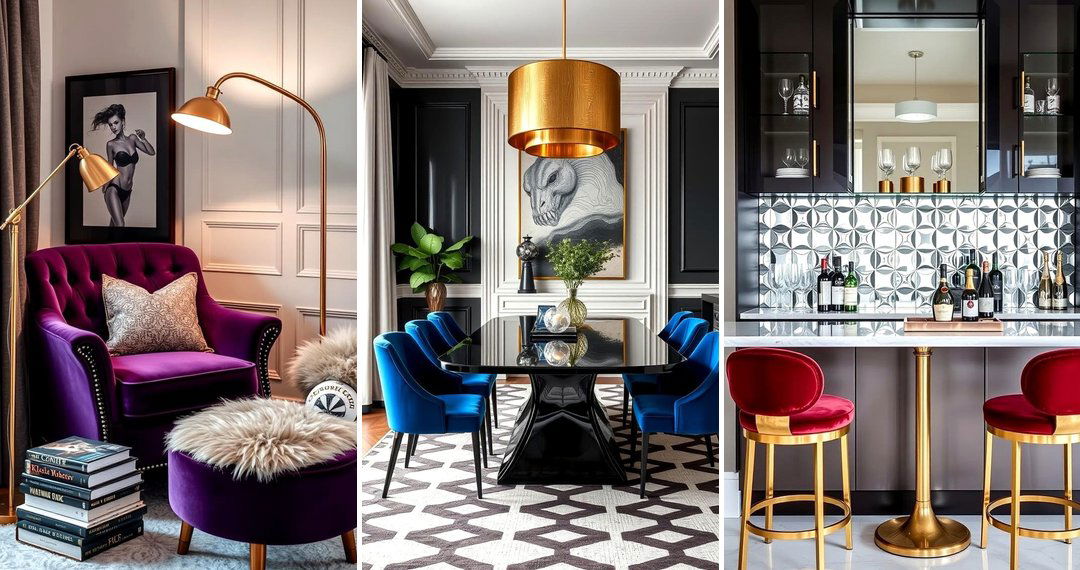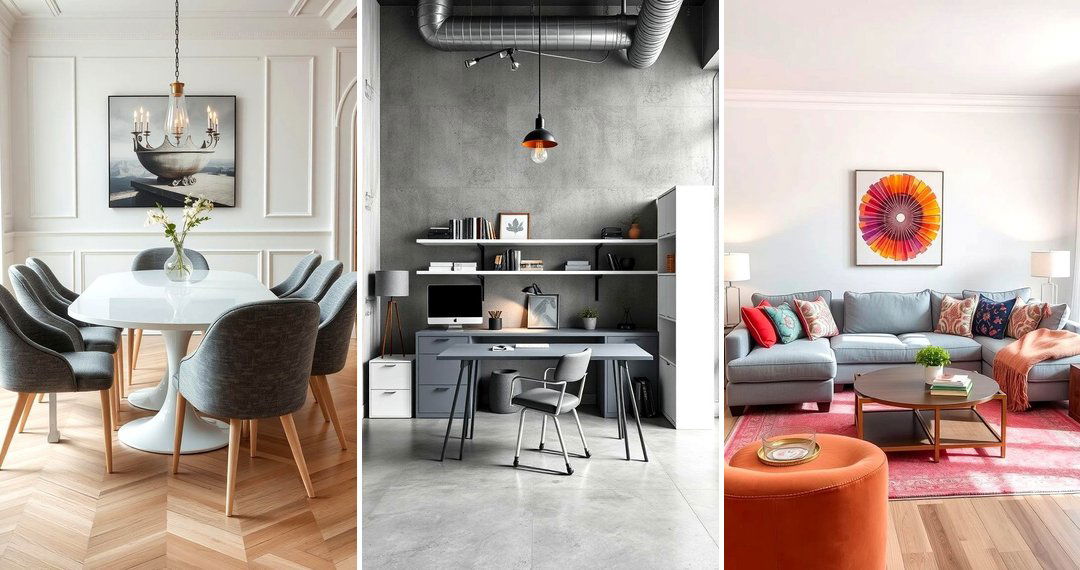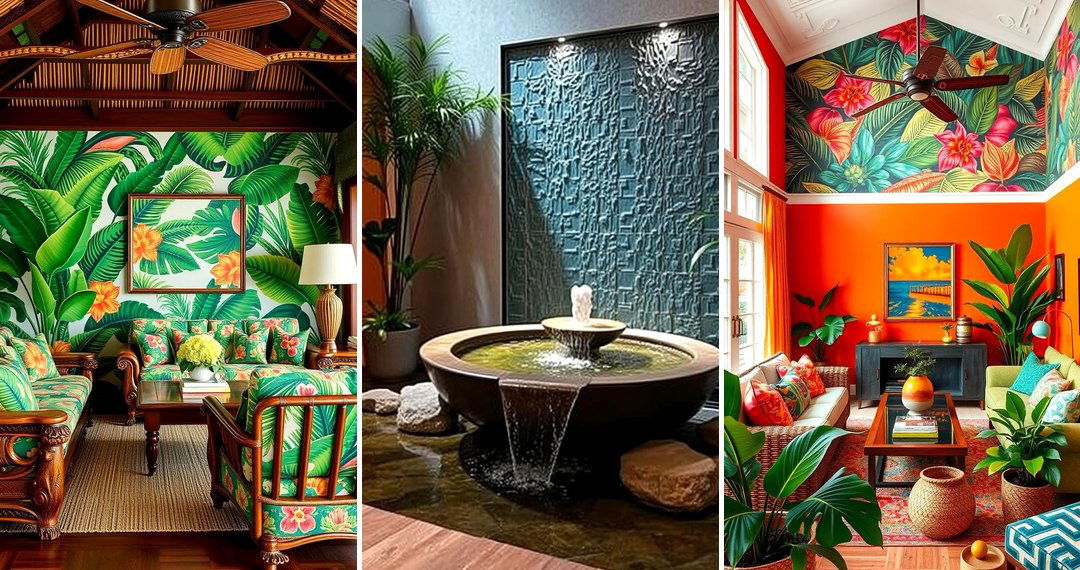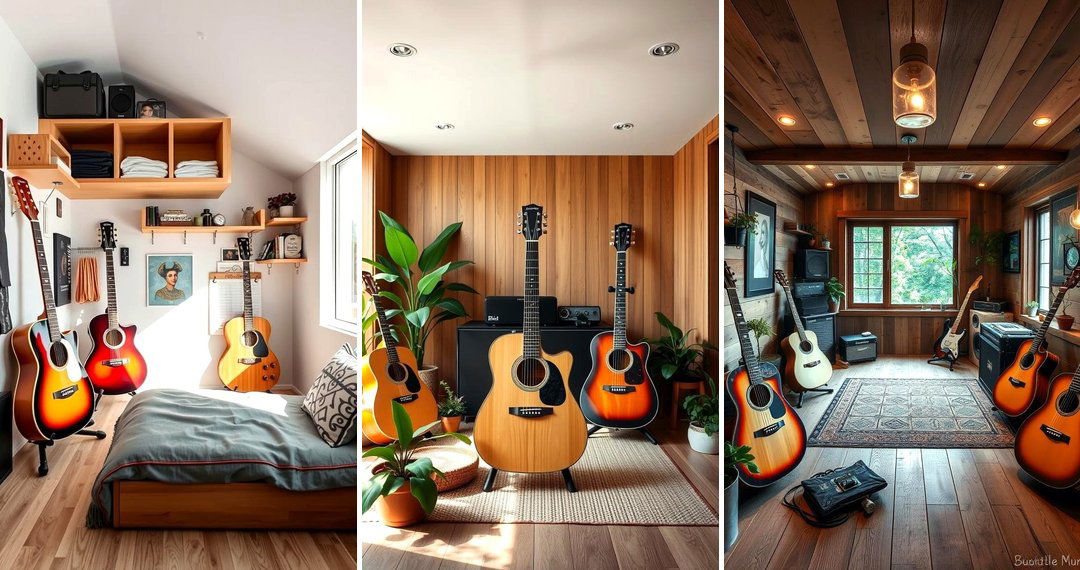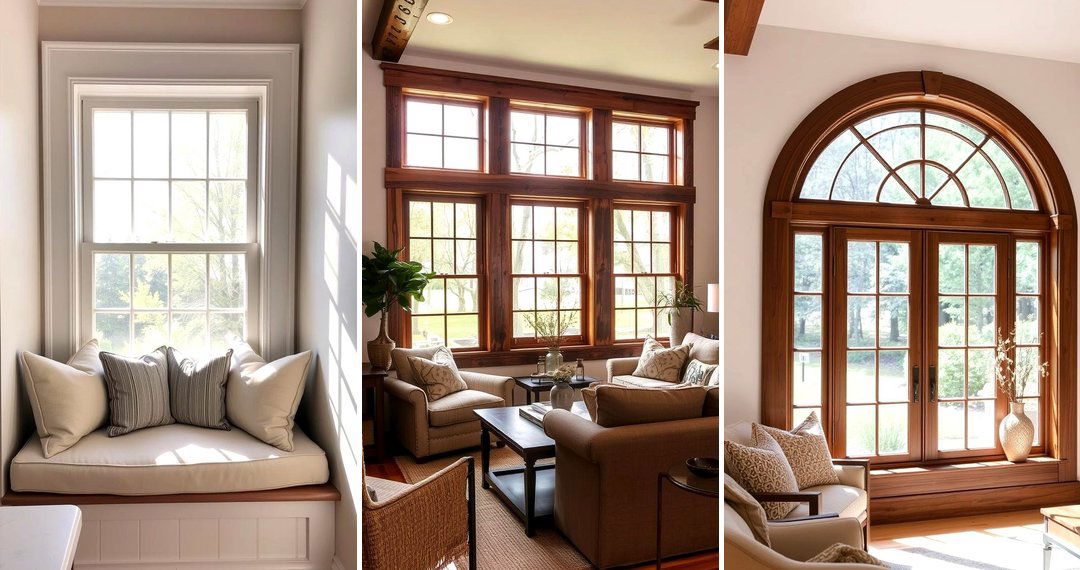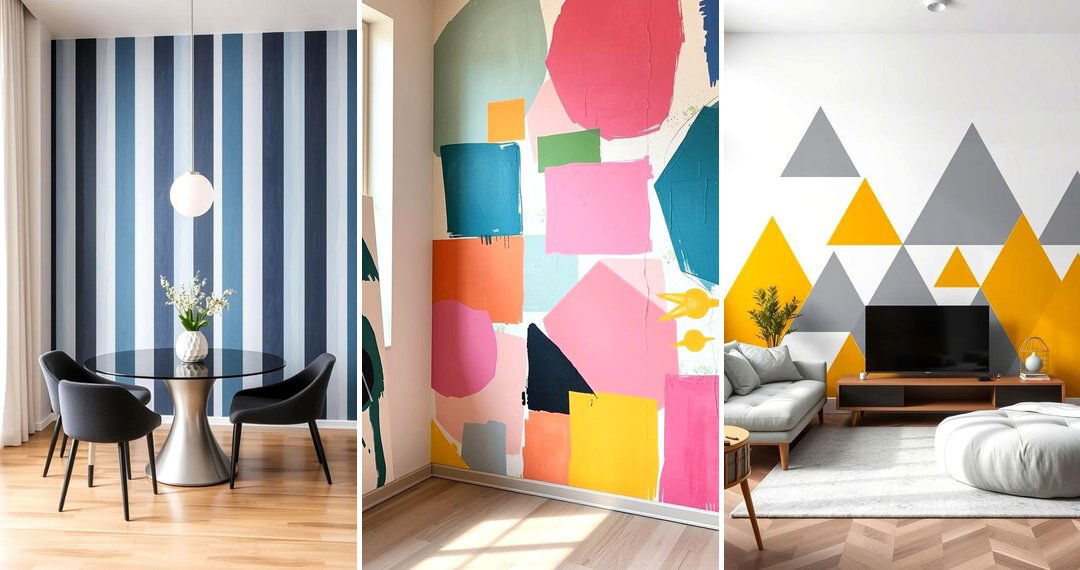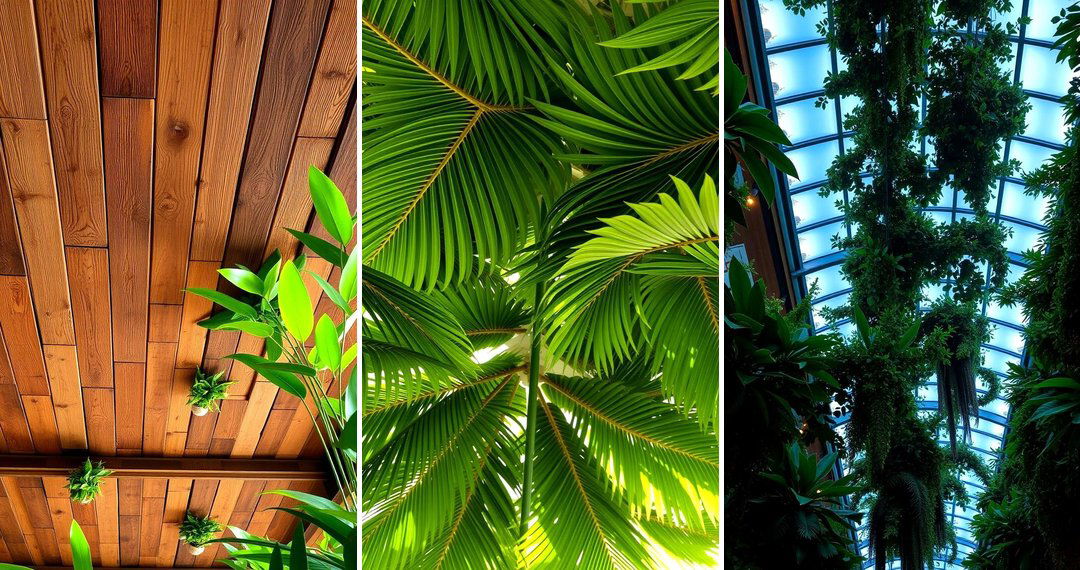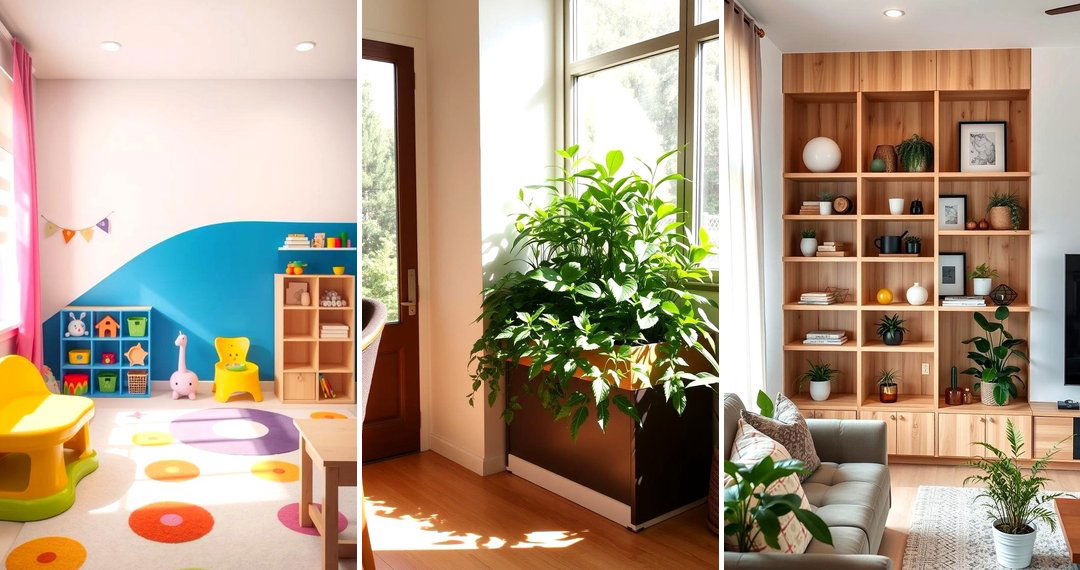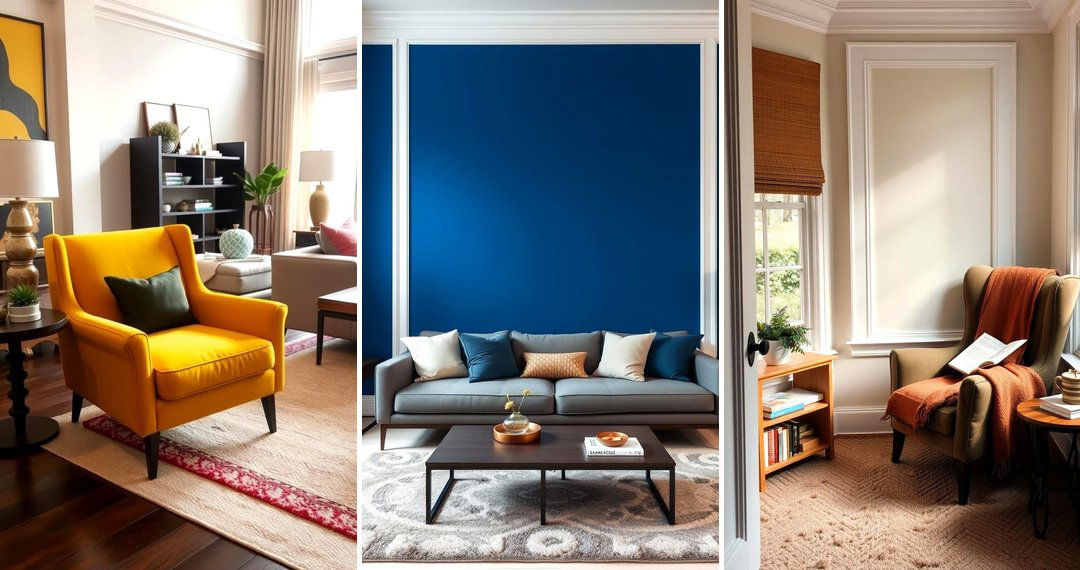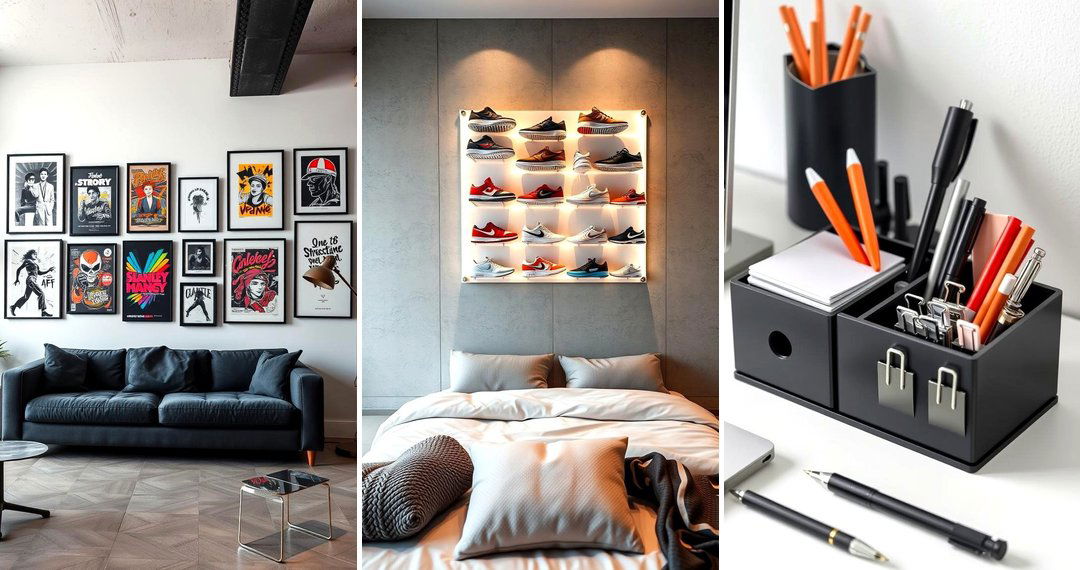Japanese interior design, with its emphasis on natural materials, simplicity, and functionality, offers a serene and harmonious living environment. Rooted in centuries of tradition, these design principles continue to resonate with modern sensibilities, providing a timeless aesthetic that promotes tranquility and well-being. Exploring the nuances of Japanese design can inspire us to create spaces that are not only visually appealing but also deeply restorative. Let's delve into some captivating Japanese interior design ideas to transform your home into a sanctuary of calm and elegance.
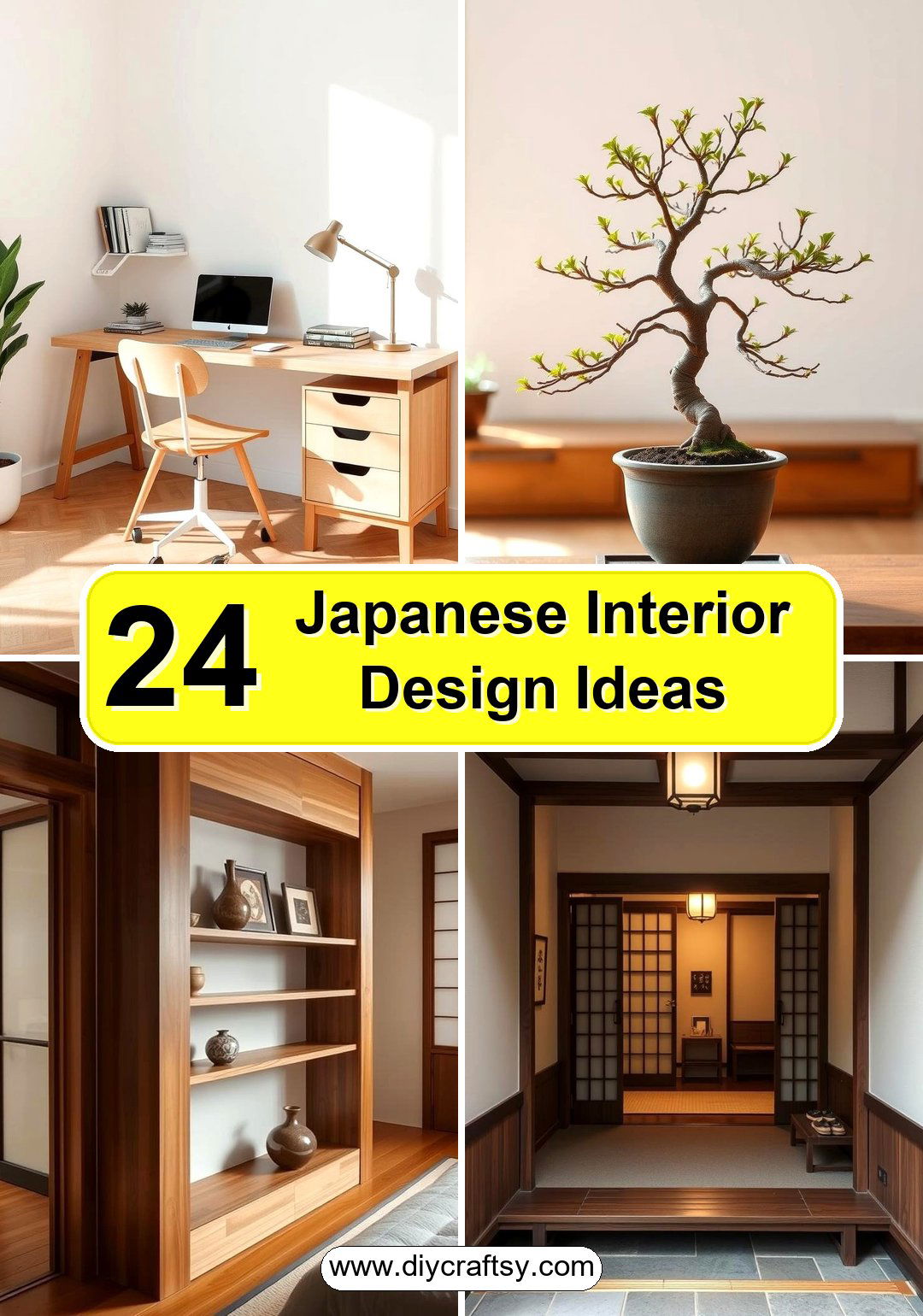
1. Genkan Entrance
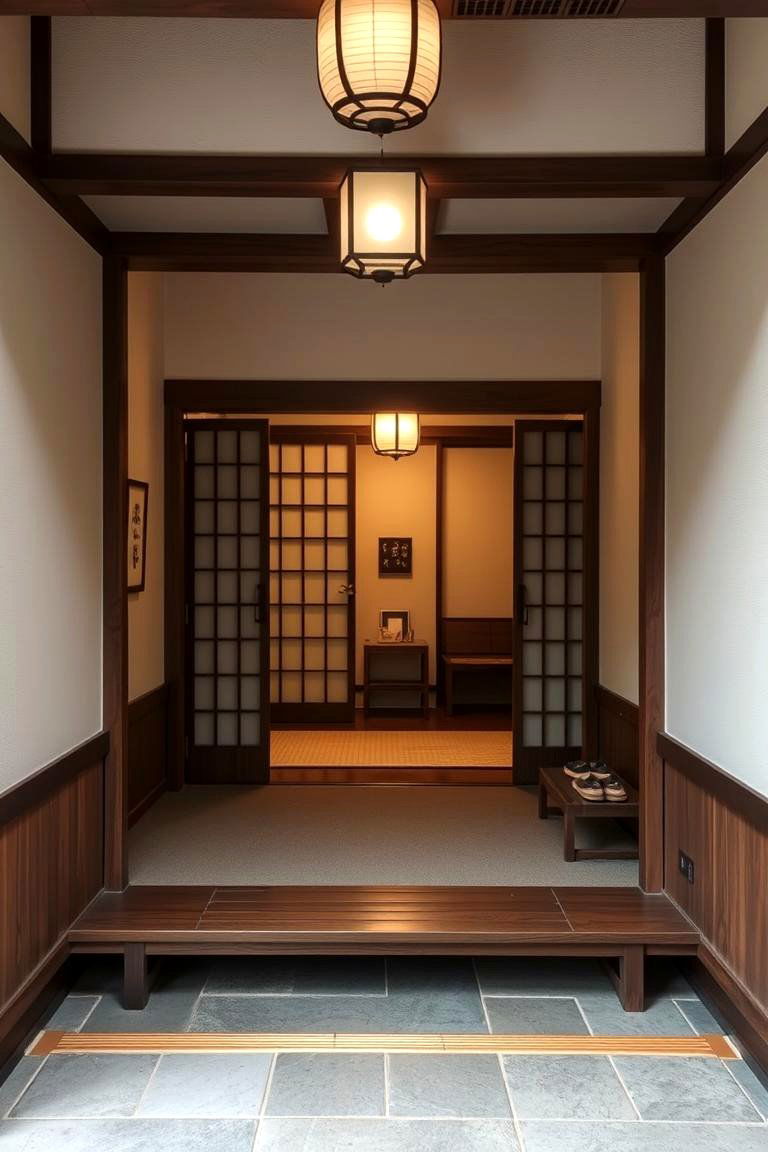
Consider the Genkan, a traditional Japanese entryway that serves as a transition space between the outside world and the interior. This area typically features a lower floor level for removing shoes and a built-in cabinet or shelf for storage. The key benefit of a Genkan is its practicality in keeping the home clean and organized by preventing outdoor dirt from entering living spaces. It also creates a mindful pause, encouraging a sense of leaving the outside world behind. To implement this, even a small designated area near the entrance with a shoe rack and a decorative screen can evoke the essence of a Genkan.
2. Shoji Screens
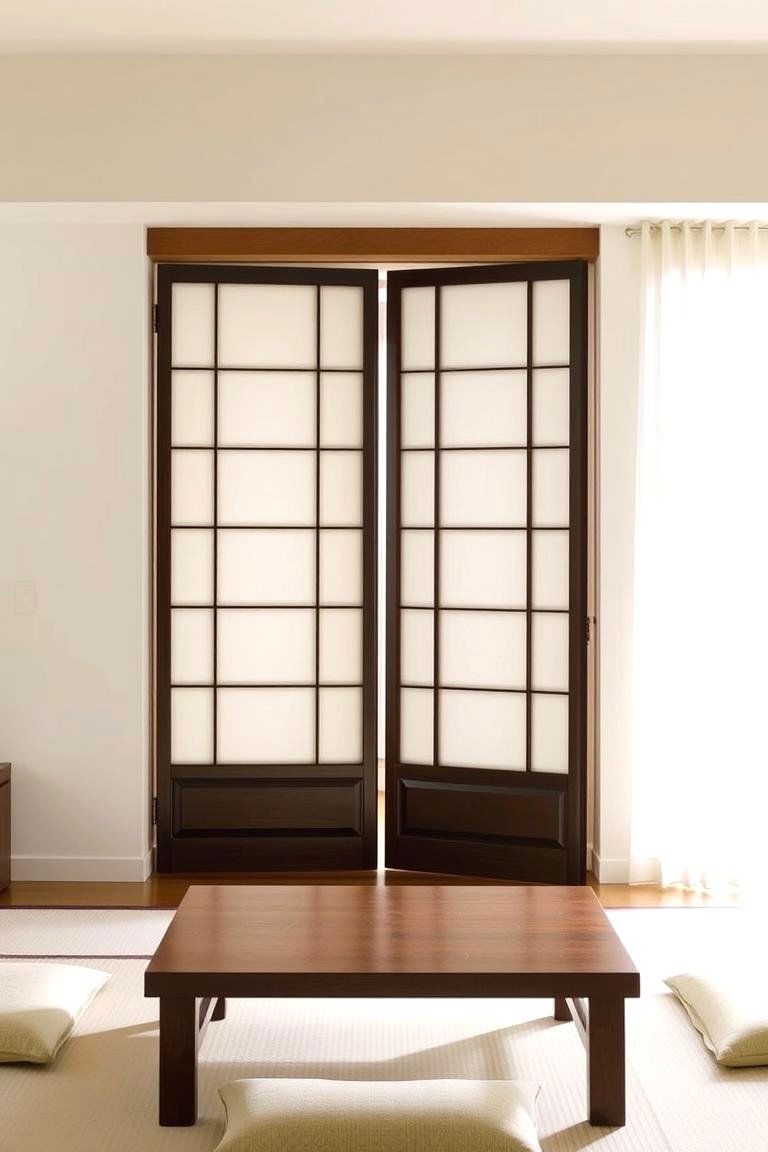
With their delicate wooden frames and translucent paper, Shoji screens are a hallmark of Japanese design. These versatile partitions offer numerous benefits, including diffusing natural light beautifully, creating a soft and warm ambiance. Additionally, they provide flexible division of space, allowing rooms to be easily transformed or opened up as needed. Imagine using Shoji screens to separate a living area from a dining space or to create a private nook within a larger room. Their lightweight nature makes them easy to move and reconfigure, adding to their practicality.
3. Tatami Mats
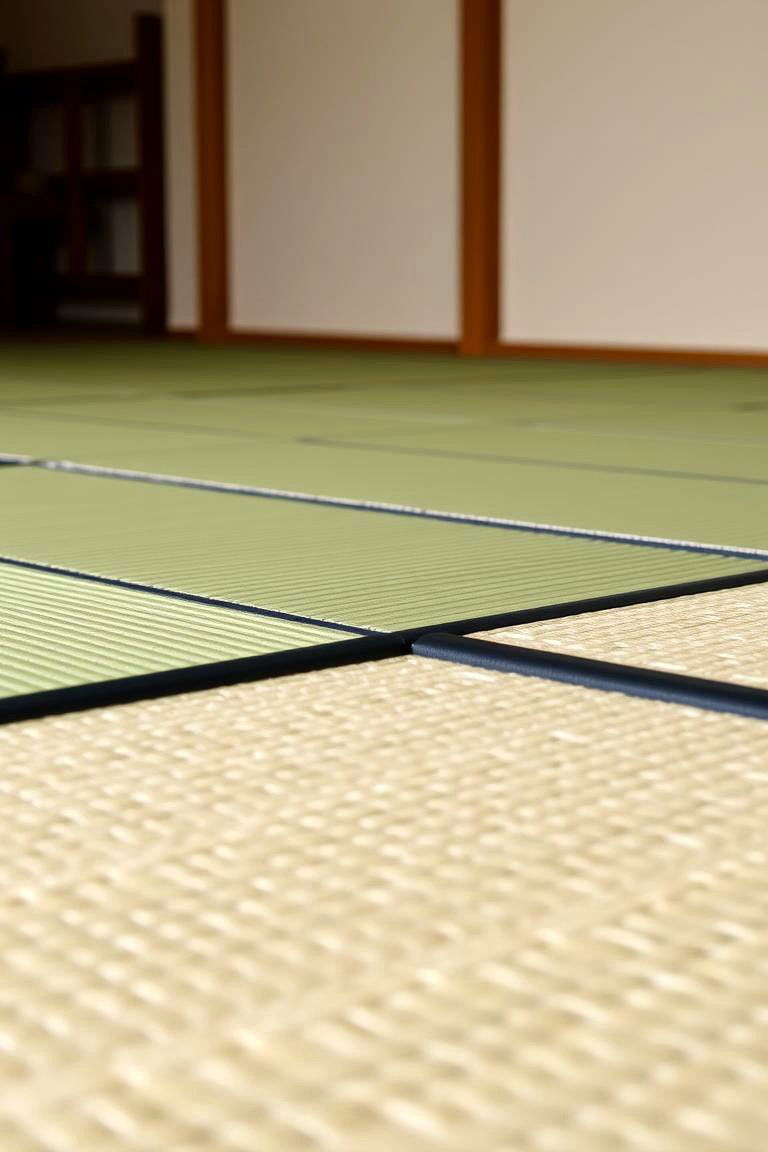
Another fundamental element of traditional Japanese interiors is Tatami mats, woven from rush grass. The key benefit of Tatami is their natural texture and subtle fragrance, which contribute to a calming and grounding atmosphere. They also offer a comfortable and resilient surface for walking, sitting, or even sleeping. Traditionally, the size of a room in Japan is often measured by the number of Tatami mats it can accommodate. Incorporating even a small Tatami area into your home can bring a touch of authentic Japanese serenity.
4. Tokonoma Alcove
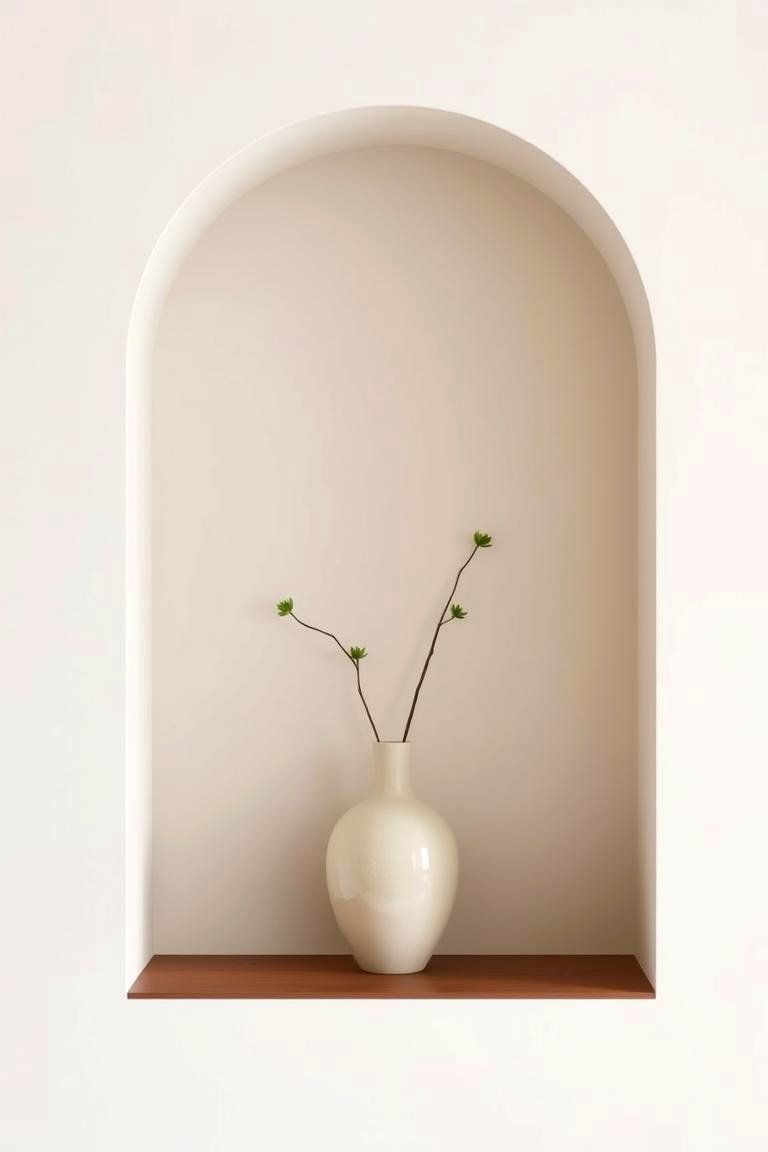
What is a Tokonoma? It's a recessed alcove in a Japanese room, traditionally used for displaying carefully selected art, calligraphy, or flower arrangements. The primary benefit of a Tokonoma is its role as a focal point, encouraging appreciation for beauty and contemplation. It adds a touch of elegance and sophistication to a space, highlighting the importance of mindful display and seasonal changes. Even a small niche in your wall can be transformed into a modern interpretation of a Tokonoma, showcasing a cherished object or artwork.
5. Fusuma Sliding Doors
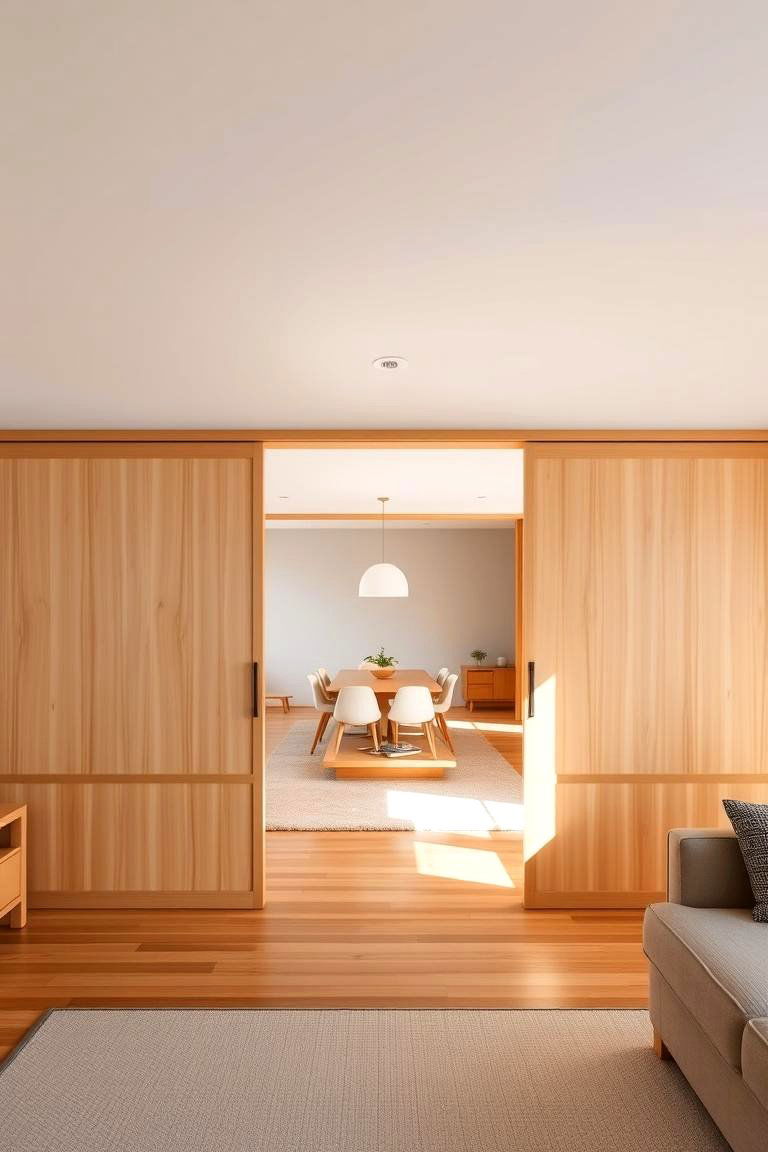
Bringing both functionality and aesthetic appeal, Fusuma are vertical rectangular panels that slide open to redefine room layouts. The key benefit of Fusuma lies in their ability to create flexible and adaptable living spaces. They can seamlessly connect or divide rooms, offering privacy when needed and openness for social gatherings. Often adorned with beautiful paintings or subtle patterns, Fusuma also contribute to the visual harmony of the interior. Consider using sliding doors in place of traditional hinged doors to maximize space and create a more fluid environment.
6. Natural Materials
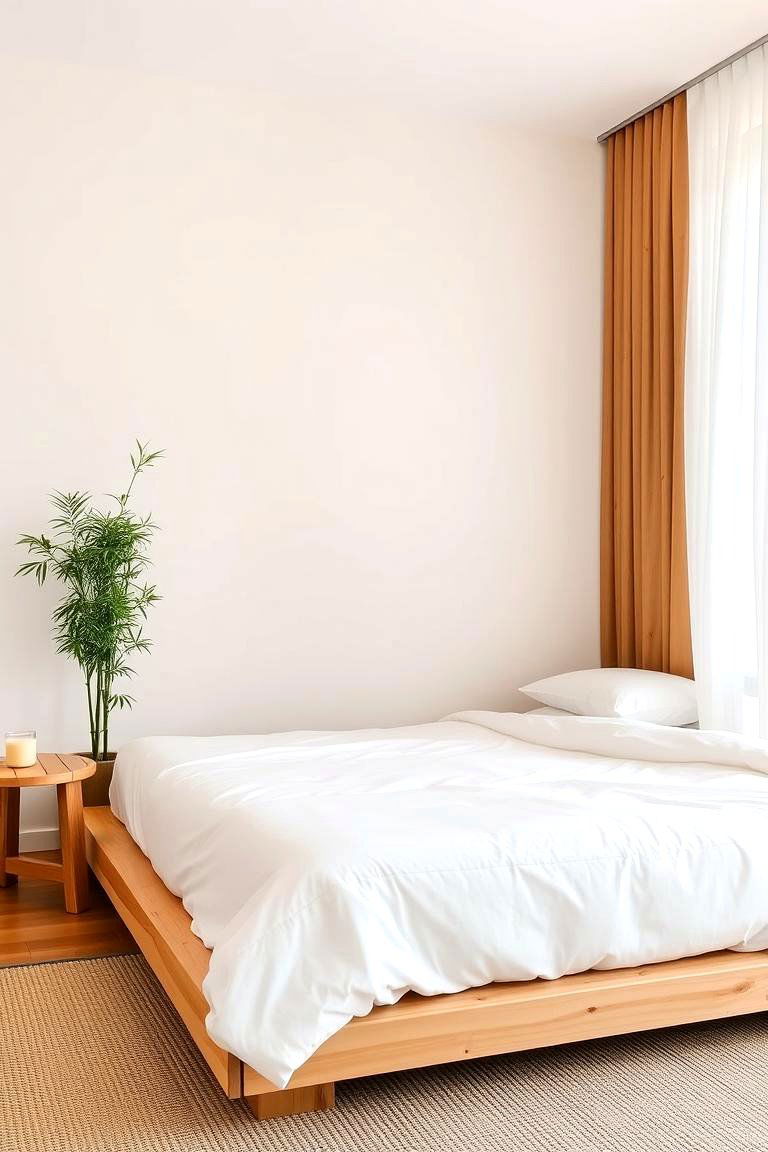
The use of natural materials is central to Japanese interior design, emphasizing a connection with nature. Wood, bamboo, paper, and natural fabrics are commonly featured, offering a range of benefits. These materials bring warmth, texture, and a sense of organic beauty to the space. They also tend to be more sustainable and create a healthier indoor environment. Think about incorporating solid wood furniture, bamboo blinds, or linen textiles to embrace this design principle.
7. Minimalism
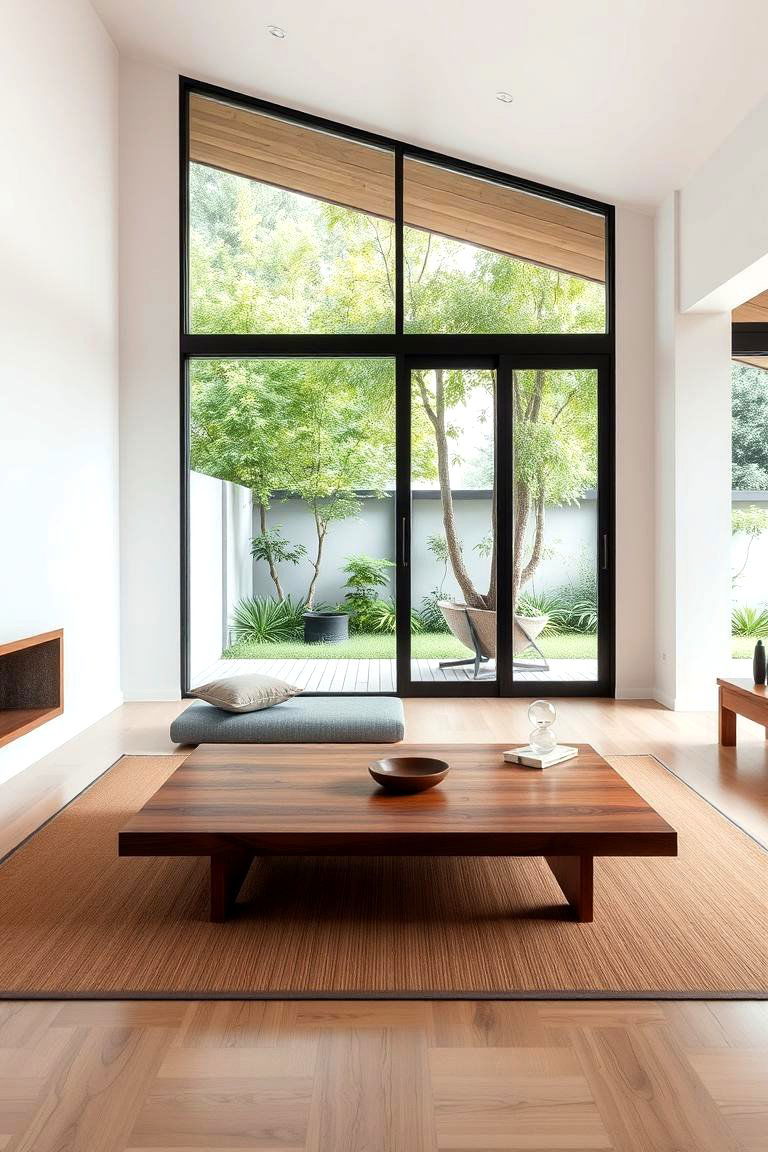
Taking inspiration from Zen philosophy, minimalism is a core tenet of Japanese interior design. The key benefit of a minimalist approach is the creation of uncluttered and serene spaces that promote mental clarity and reduce distractions. This involves keeping only essential items and prioritizing functionality over ornamentation. Embrace the concept of "less is more" by decluttering your living spaces and focusing on quality, well-chosen pieces.
8. Open Floor Plans
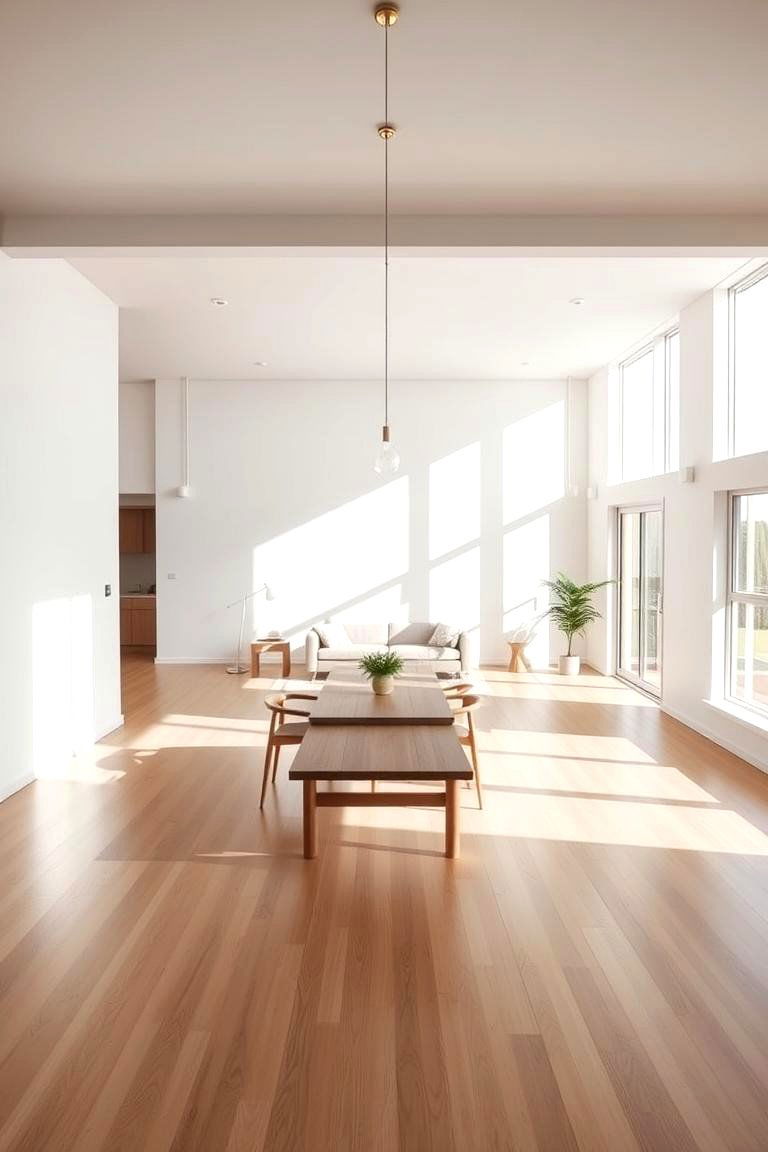
Another characteristic of Japanese interiors is the prevalence of open floor plans. The primary benefit of this layout is the enhanced flow of natural light and air throughout the home, creating a sense of spaciousness and connectivity. Open plans also facilitate social interaction and a more flexible use of space. If your home's structure allows, consider opening up walls between living areas to create a more integrated and airy environment.
9. Natural Light
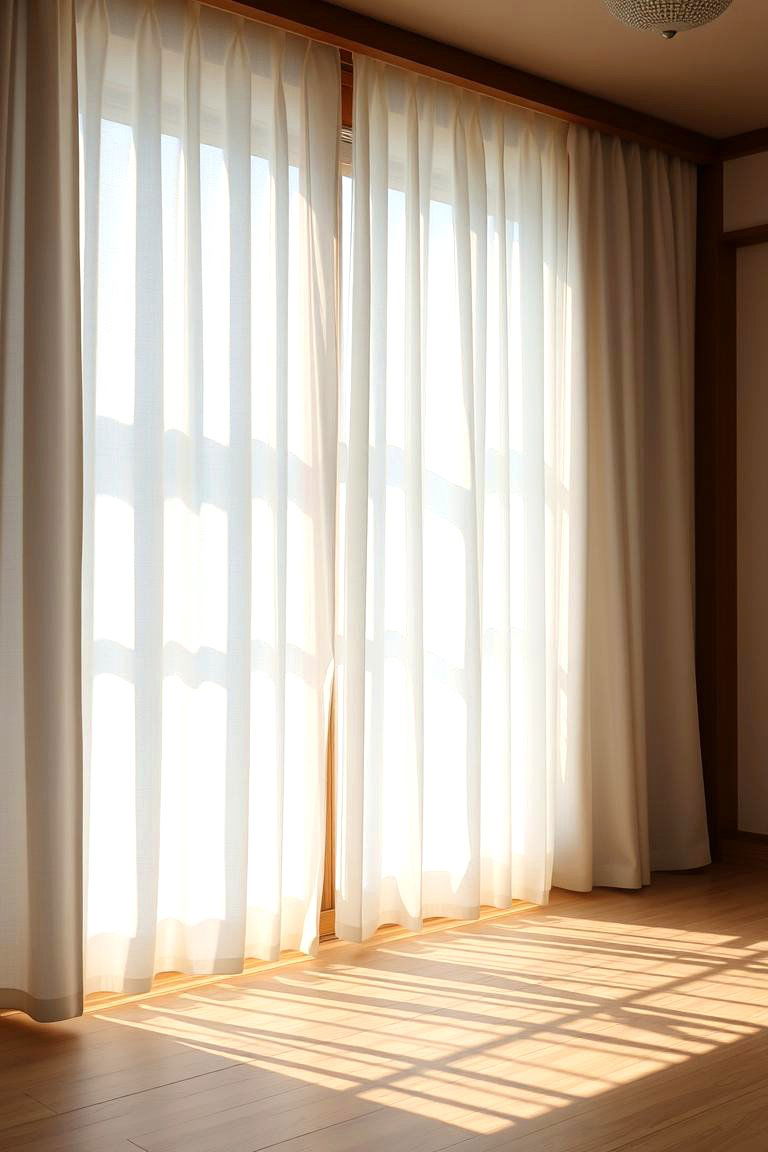
The thoughtful incorporation of natural light is crucial in Japanese design. Rather than harsh overhead lighting, the focus is on soft, diffused light that creates a gentle and inviting atmosphere. The key benefit of maximizing natural light is its positive impact on mood and well-being, as well as reducing the need for artificial lighting during the day. Utilize sheer curtains or blinds to filter sunlight and consider the placement of furniture to optimize light flow.
10. Indoor Plants
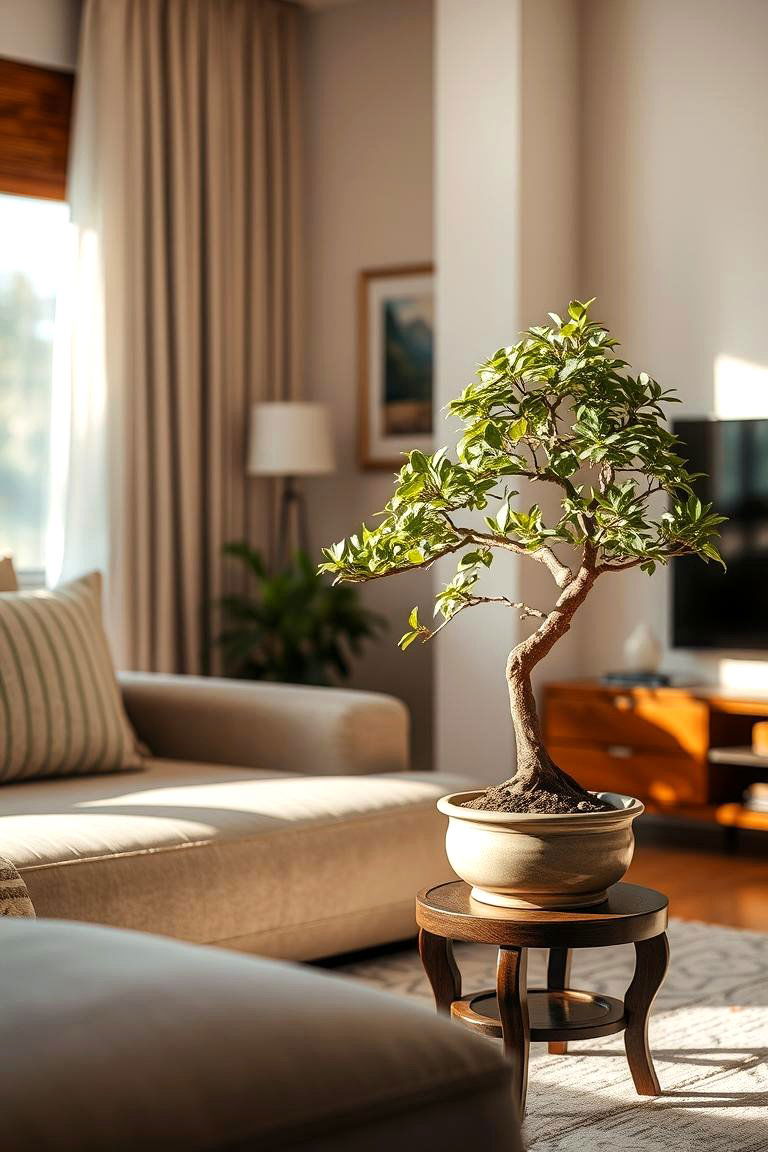
Bringing the outdoors in is a key aspect of Japanese interior design. Indoor plants, such as bonsai trees or bamboo stalks, are often used to add a touch of nature and tranquility to the space. The benefits of incorporating plants are numerous, including improved air quality, reduced stress levels, and a visual connection to the natural world. Choose plants that thrive in indoor environments and consider their placement to create a harmonious balance.
11. Neutral Color Palette

A predominantly neutral color palette is characteristic of Japanese interiors, typically featuring shades of white, beige, gray, and natural wood tones. The key benefit of this color scheme is its ability to create a calming and peaceful atmosphere. Neutral colors provide a versatile backdrop that allows natural textures and subtle accents to stand out. Consider using these colors for walls, flooring, and larger furniture pieces, adding pops of color through artwork or textiles.
12. Clean Lines and Simplicity
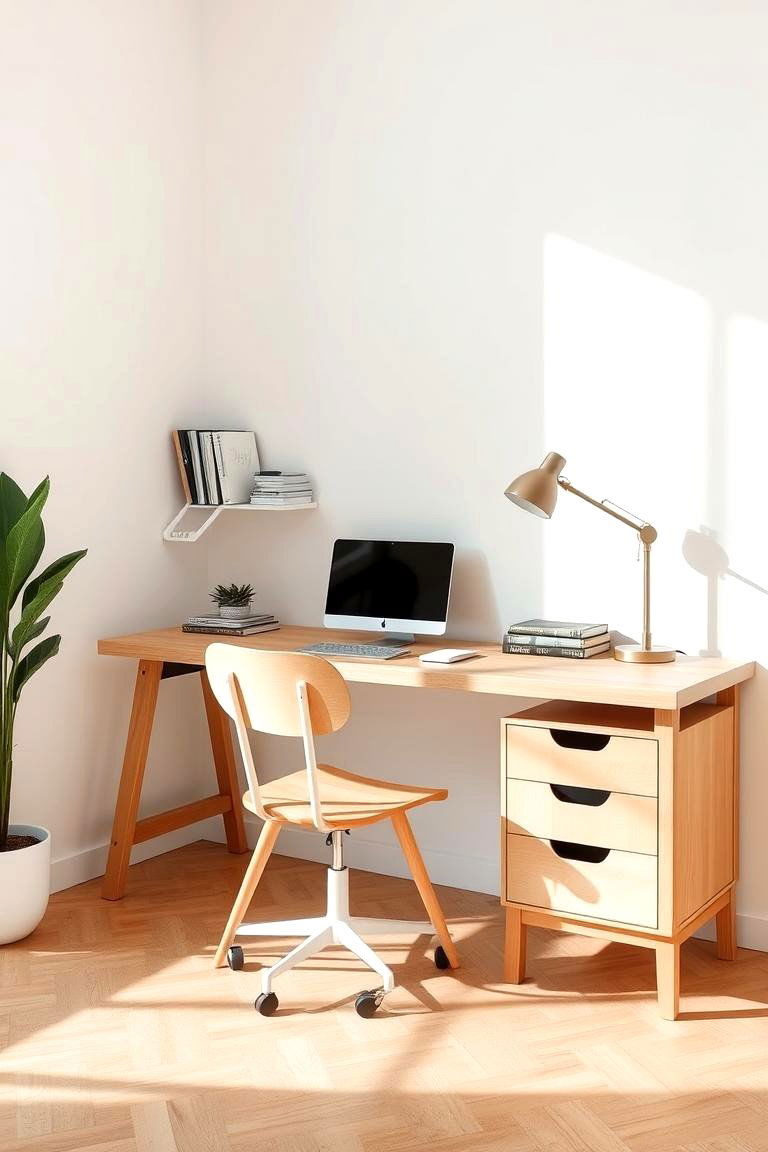
The emphasis on clean lines and simplicity is evident throughout Japanese interior design. This design principle avoids unnecessary ornamentation and focuses on the pure form and function of objects. The benefit of clean lines is a sense of order and visual clarity, contributing to a more peaceful and harmonious environment. Choose furniture and decor with simple, uncluttered designs.
13. Emphasis on Horizontal Lines
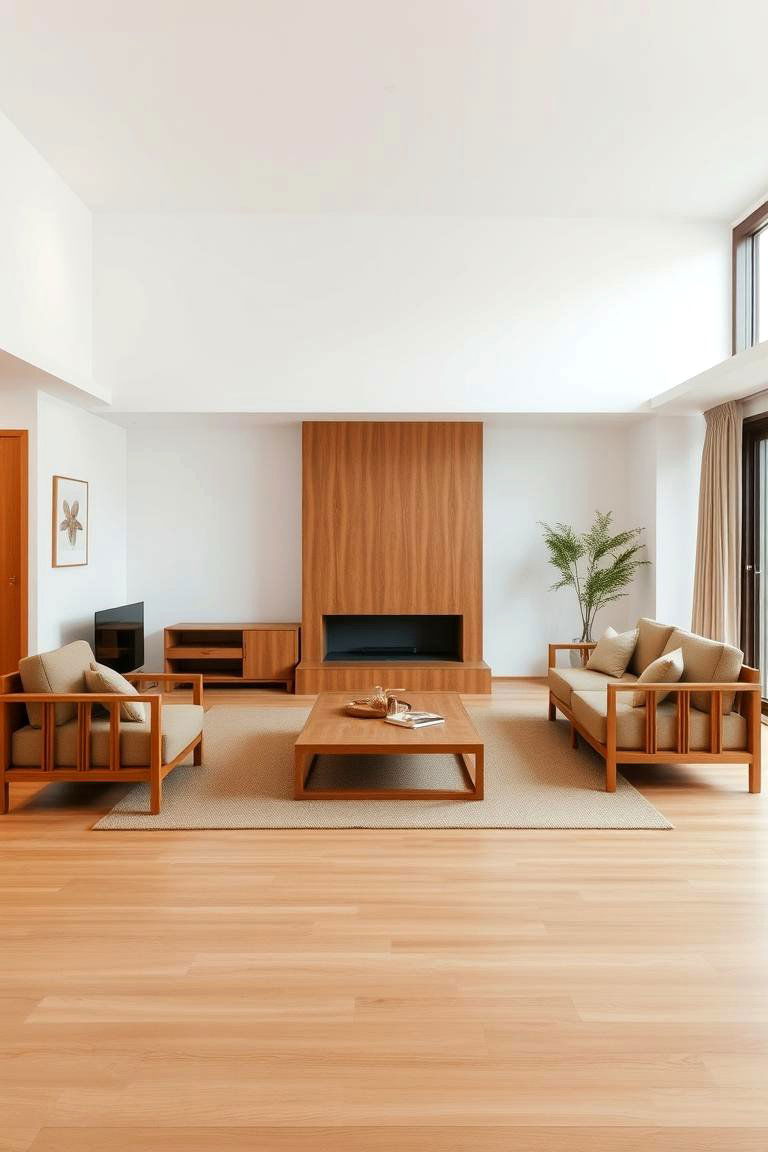
Looking closely at Japanese interiors, you'll notice an emphasis on horizontal lines. This design element contributes to a sense of stability, spaciousness, and connection to the earth. The benefit of incorporating horizontal lines is a feeling of groundedness and tranquility within the space. Consider low-profile furniture and horizontal architectural elements to achieve this effect.
14. Built-in Storage
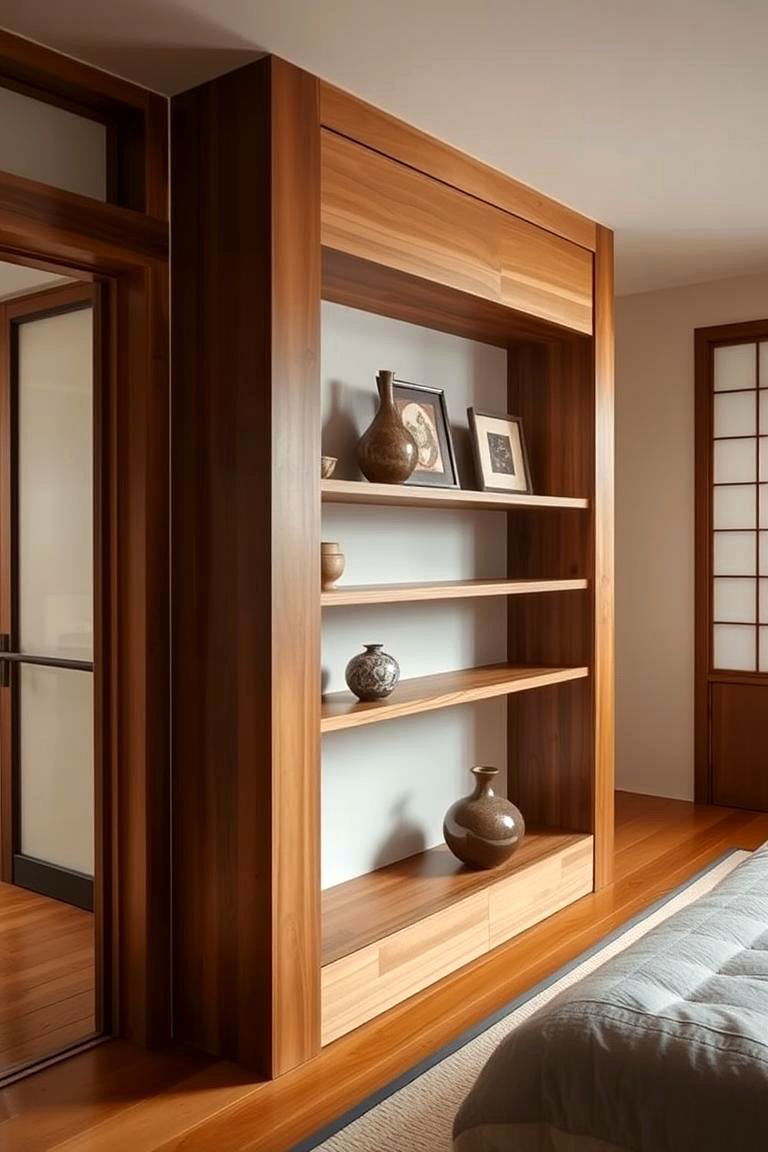
To maintain a minimalist aesthetic, Japanese design often incorporates clever built-in storage solutions. The key benefit of built-in storage is its ability to keep clutter out of sight, contributing to a clean and organized environment. This can include recessed shelving, under-floor storage, or integrated cabinetry. Think about how you can maximize storage space in a discreet and seamless way.
15. Low Furniture
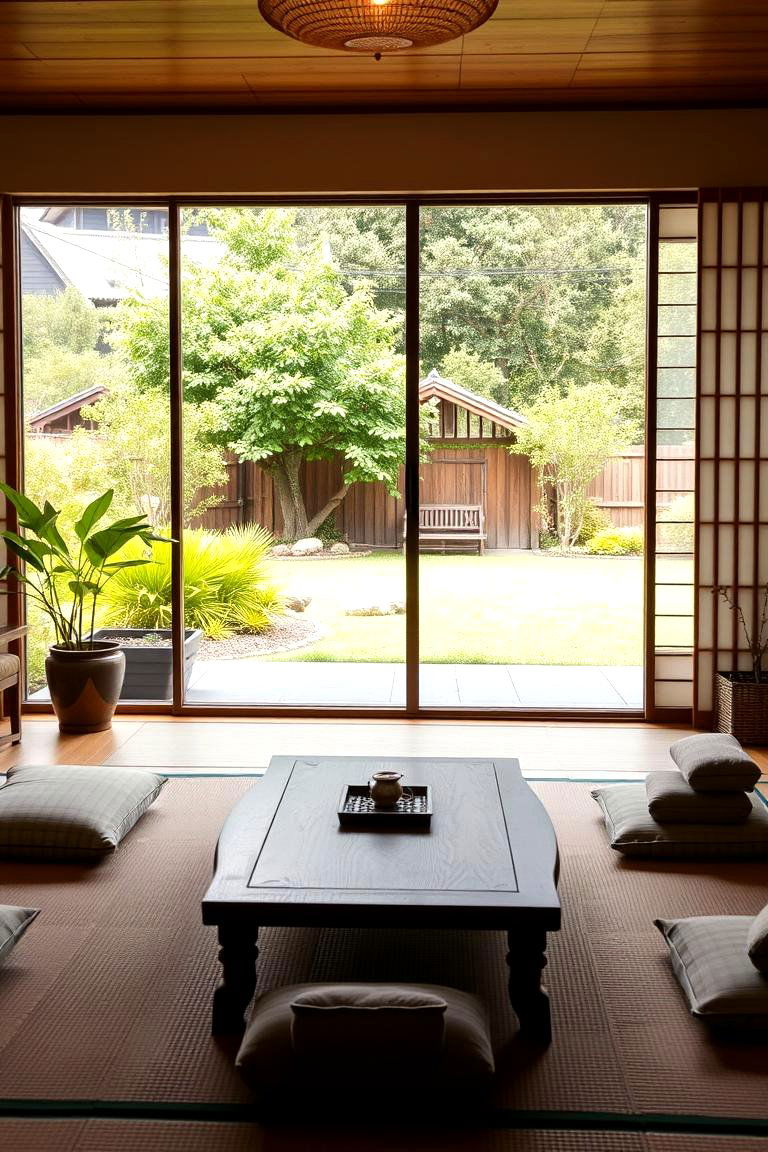
Another distinctive feature of Japanese interiors is the use of low furniture. This design choice enhances the feeling of spaciousness and promotes a more grounded and relaxed atmosphere. The benefit of low furniture is a more intimate connection with the floor and a broader sense of the room's volume. Consider incorporating low tables, floor cushions, or low platform beds.
16. Wabi-Sabi Philosophy
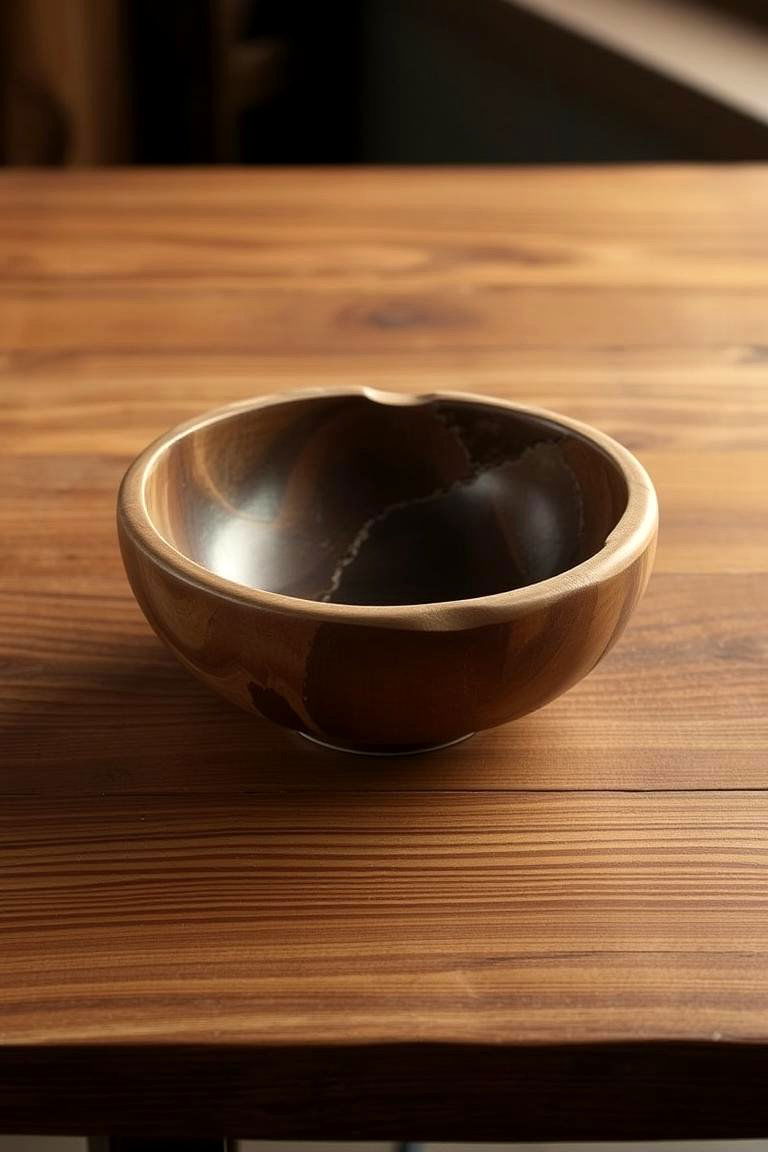
The Japanese philosophy of Wabi-Sabi embraces the beauty of imperfection and transience. This aesthetic celebrates natural wear and tear, asymmetry, and the beauty of simple, unadorned objects. The benefit of adopting Wabi-Sabi is a shift in perspective, finding beauty in the imperfect and appreciating the history and character of objects. Incorporate vintage or handcrafted items with natural imperfections.
17. Engawa (Veranda)
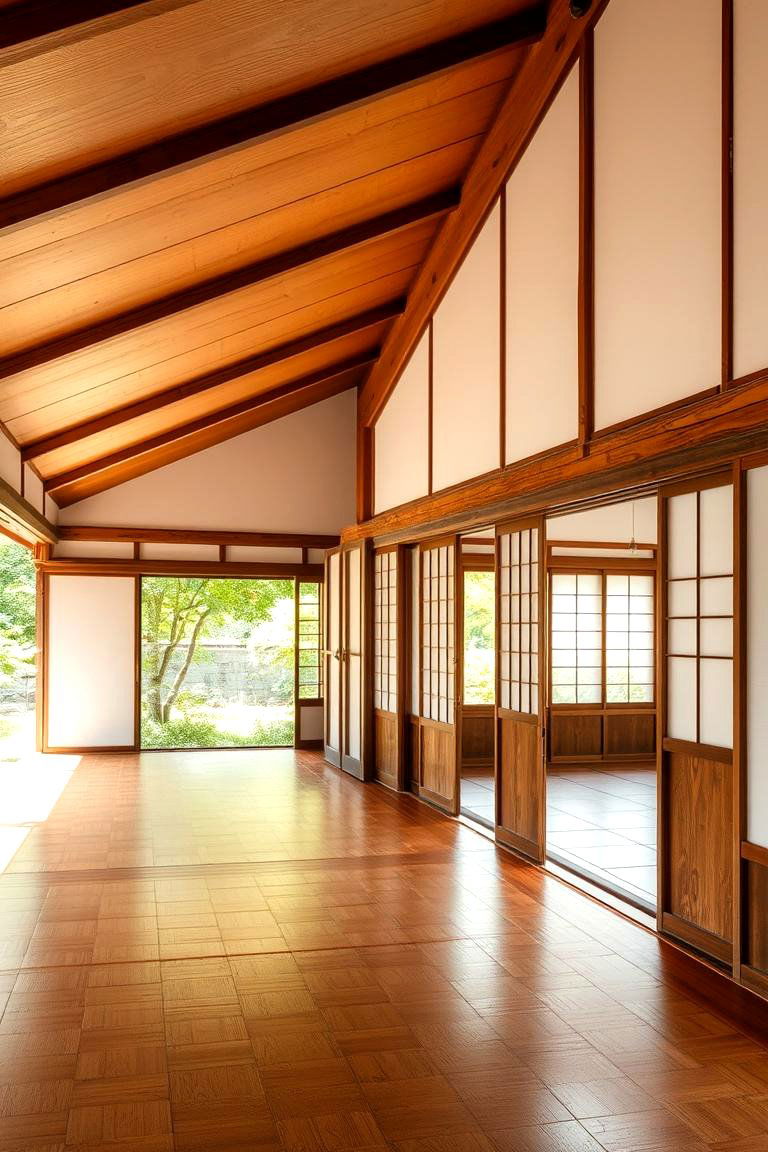
For those with outdoor space, consider incorporating an Engawa, a traditional Japanese veranda that acts as a transitional space between the interior and the garden. The key benefit of an Engawa is its ability to seamlessly connect indoor and outdoor living, allowing for a greater appreciation of nature. It provides a space for relaxation and contemplation, blurring the lines between the home and its surroundings.
18. Ofuro (Japanese Bath)
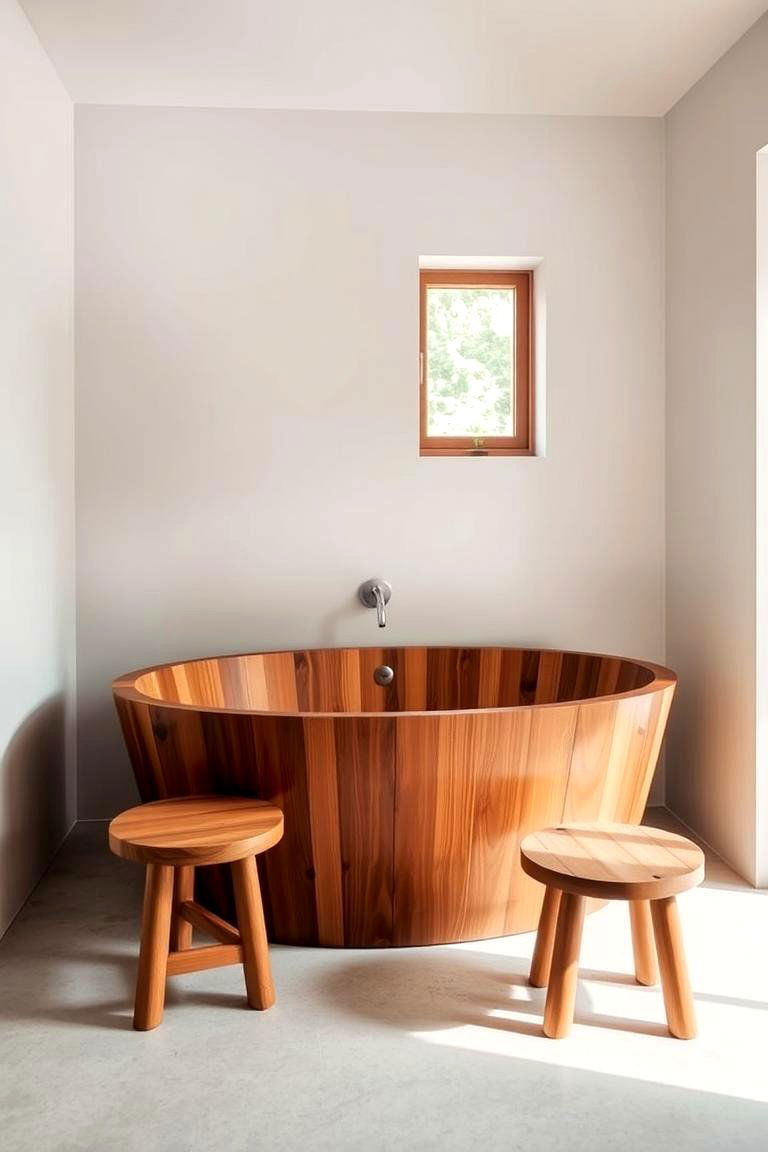
Bringing a spa-like experience home, the Ofuro is a traditional deep soaking tub designed for relaxation and cleansing. The primary benefit of an Ofuro is its therapeutic effect, promoting relaxation and stress relief. The ritual of bathing in an Ofuro is an important part of Japanese culture, emphasizing mindfulness and self-care. If space allows, consider incorporating a deep soaking tub into your bathroom design.
19. Paper Lanterns (Chochin)
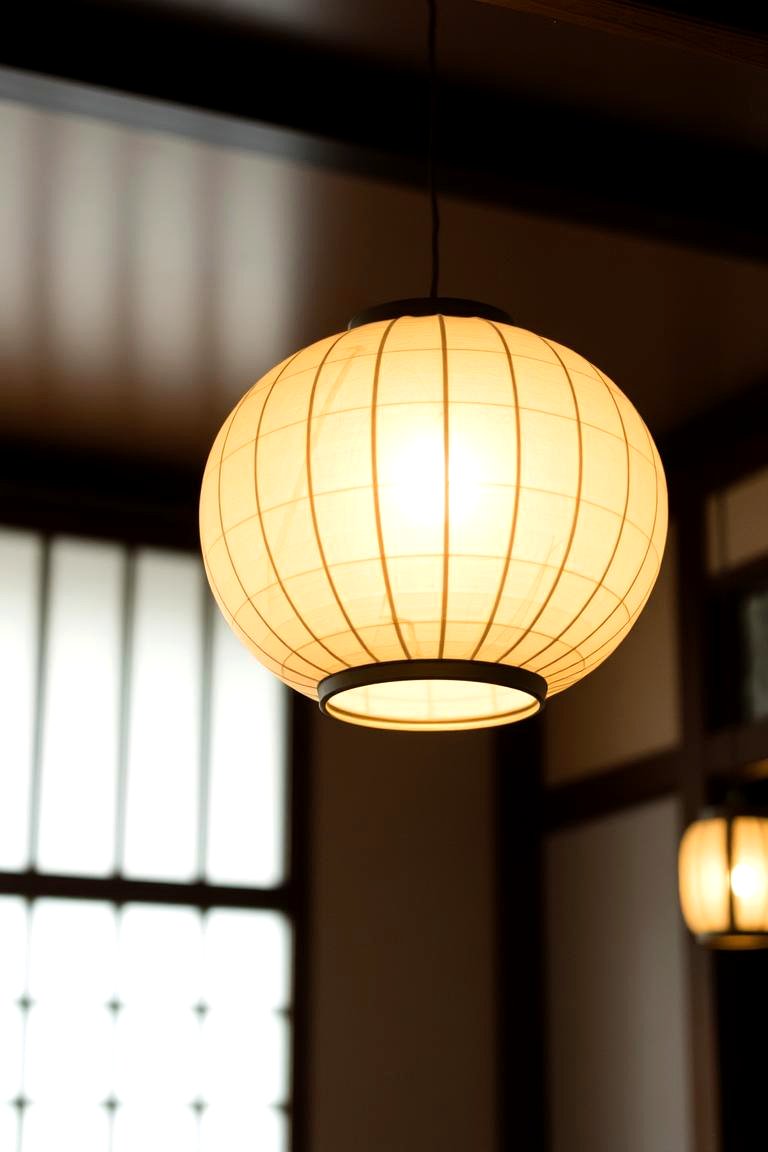
Adding a touch of traditional charm, paper lanterns, or Chochin, are often used for soft and ambient lighting in Japanese interiors. The key benefit of paper lanterns is their ability to diffuse light gently, creating a warm and inviting atmosphere. They come in various shapes and sizes and can be used as pendant lights or decorative accents. Consider incorporating paper lanterns to add a touch of Japanese elegance to your lighting scheme.
20. Bonsai Trees
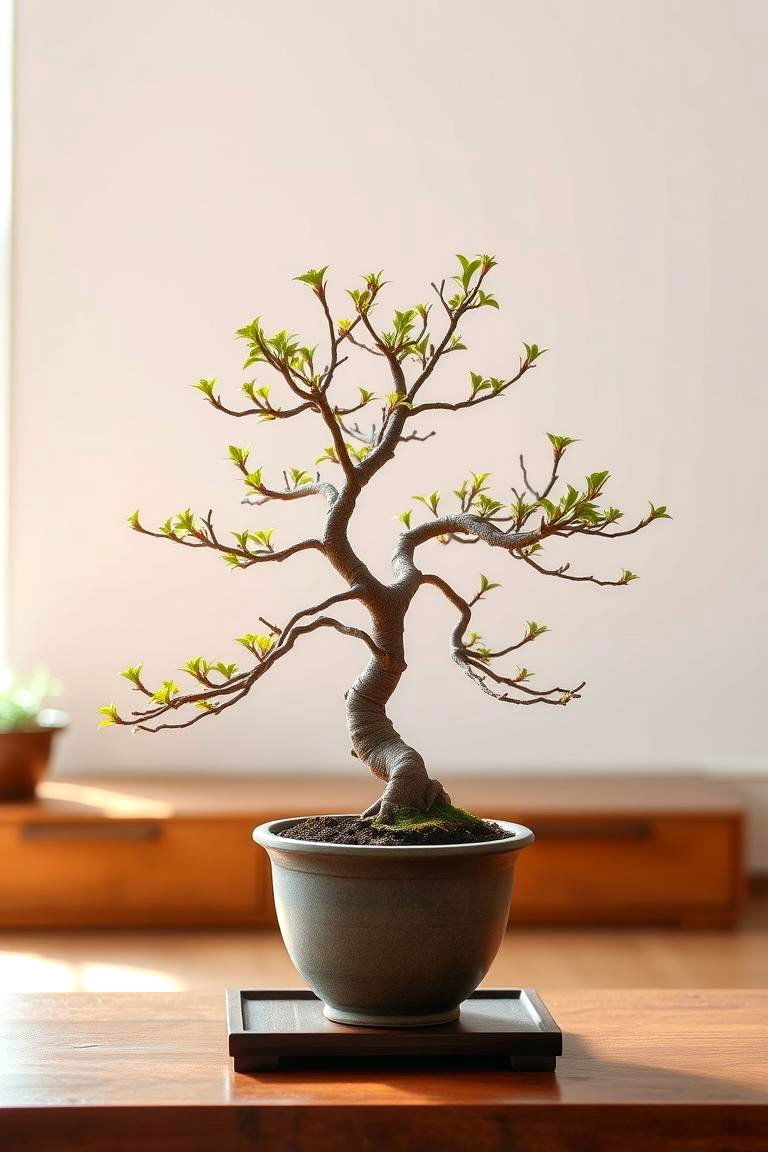
Take, for example, the art of Bonsai, the cultivation of miniature trees in containers. The key benefit of incorporating Bonsai into your interior design is the introduction of a living piece of art that embodies patience, balance, and harmony. Caring for a Bonsai tree can be a meditative practice, connecting you with nature and adding a unique focal point to your space.
21. Ikebana (Flower Arranging)
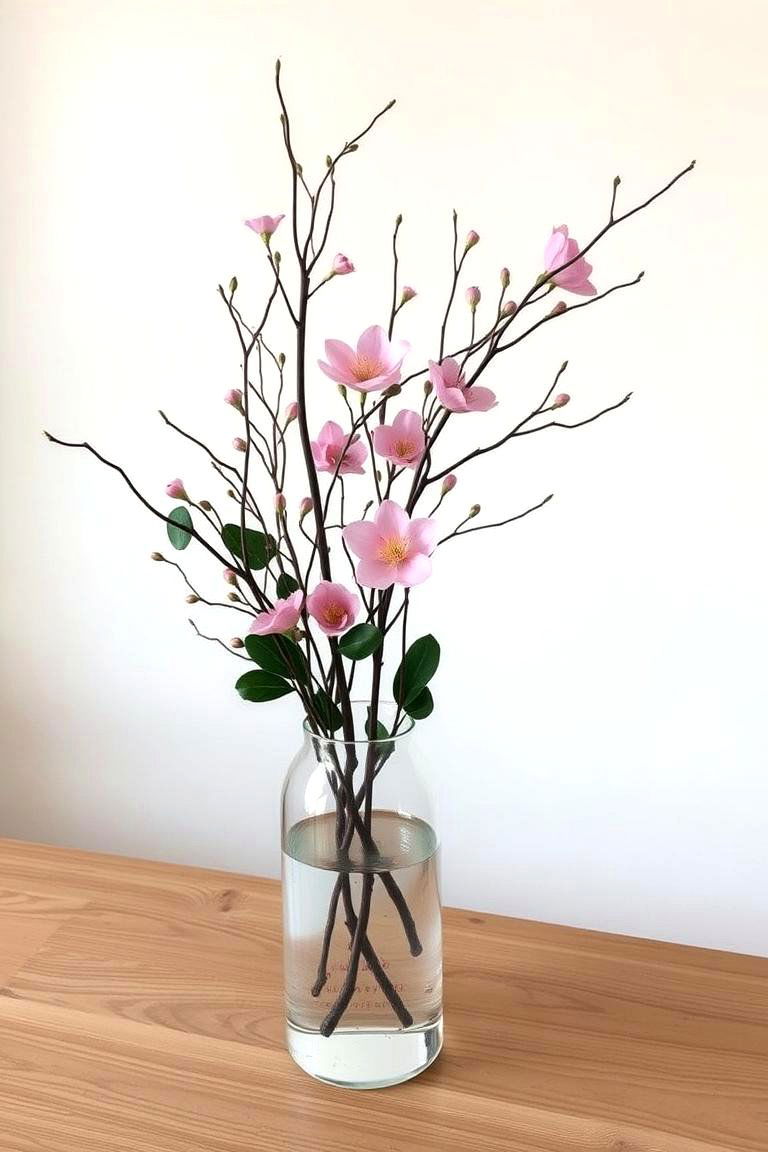
Another beautiful Japanese art form to consider is Ikebana, the art of flower arranging. Unlike Western floral arrangements, Ikebana emphasizes asymmetry, empty space, and the natural form of the materials. The key benefit of Ikebana is its ability to bring a touch of natural beauty and artistic expression into the home, fostering a sense of mindfulness and appreciation for the fleeting beauty of nature.
22. Tea Ceremony Room (Chashitsu) Inspired Elements
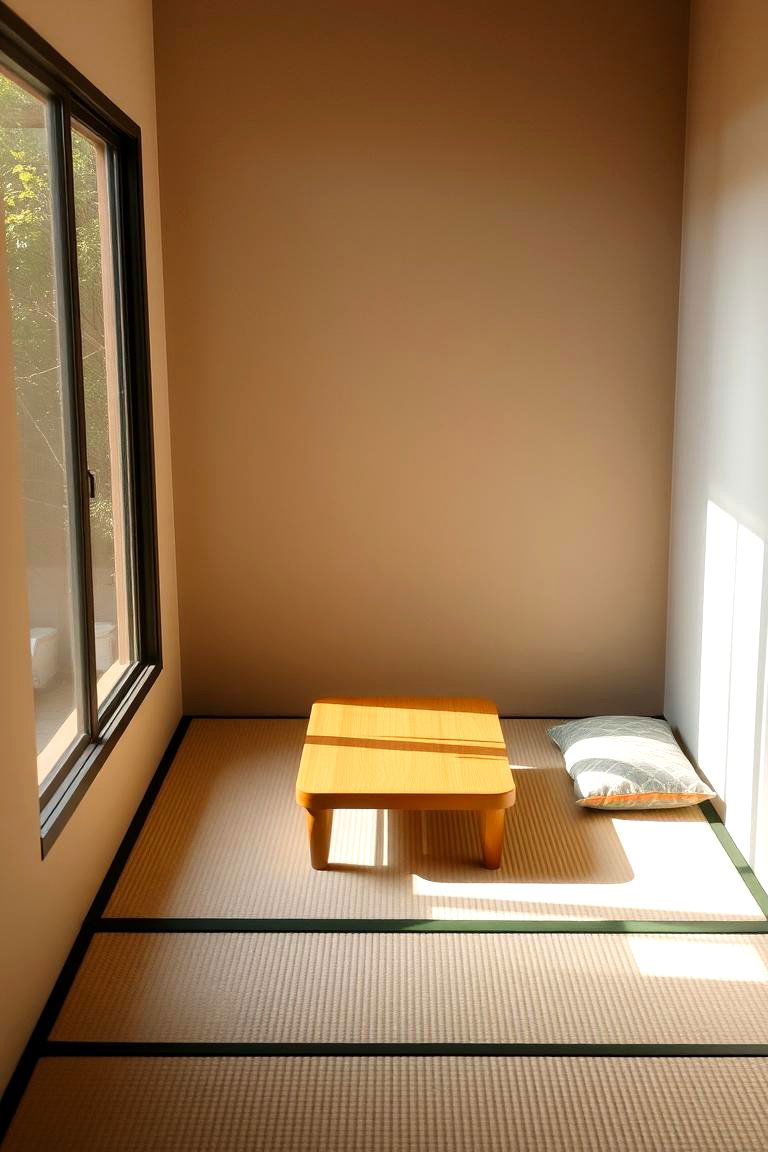
While a full traditional tea ceremony room might not be feasible, incorporating elements inspired by the Chashitsu can bring a sense of tranquility to your home. The key benefit of these elements is the creation of a dedicated space for mindfulness and calm. This could include a simple Tatami area, a low table, and a focus on natural light and minimal decoration.
23. Stone Garden (Sekitei) Inspired Details
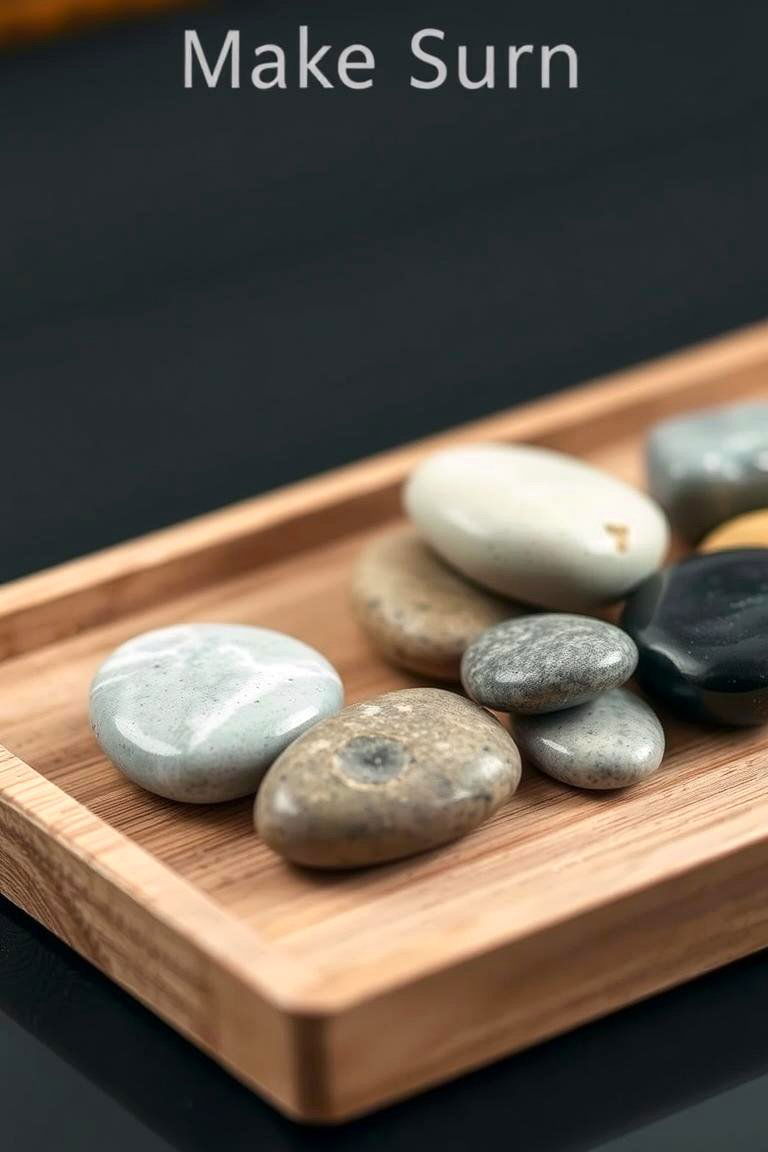
Even without a full outdoor stone garden, you can incorporate elements inspired by Sekitei into your interior design. The benefit of these details is the introduction of natural textures and a sense of calm contemplation. This could involve using natural stones as decorative accents, incorporating gravel or sand in a small tray, or choosing artwork that depicts serene landscapes.
24. Emphasis on Empty Space (Ma)
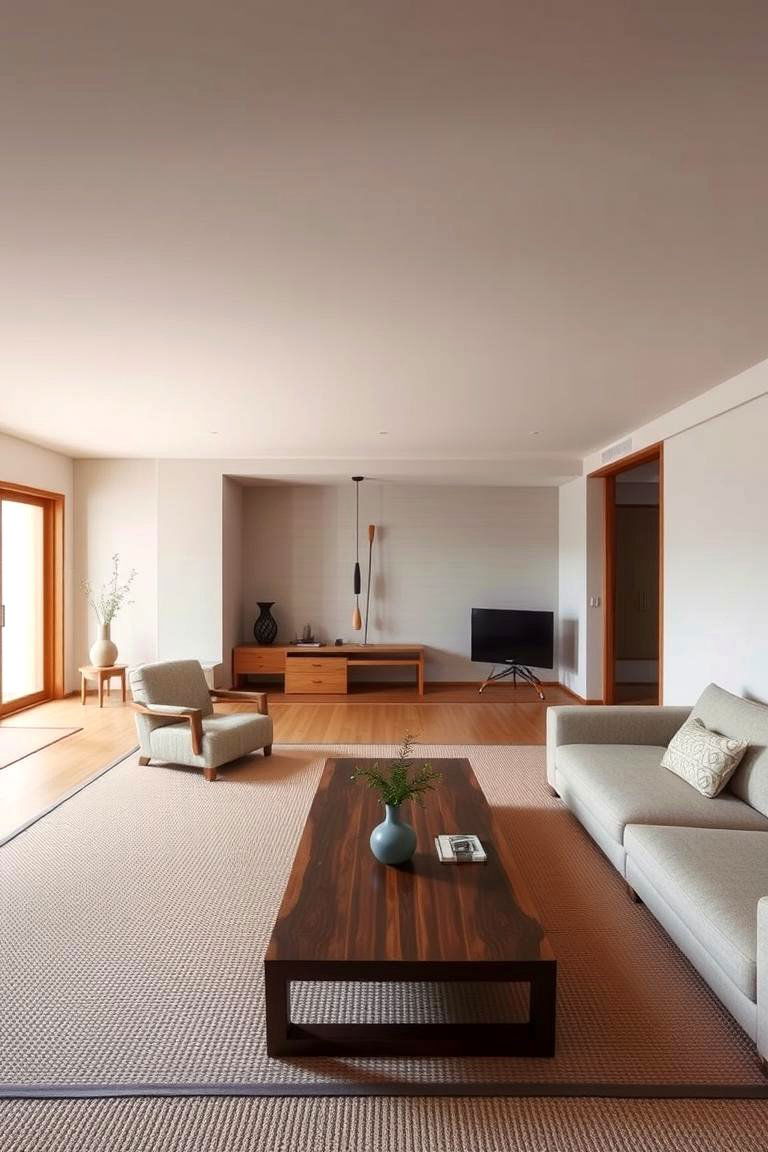
Finally, remember the importance of "Ma," or empty space, in Japanese interior design. This concept emphasizes that the absence of objects is just as important as their presence. The key benefit of embracing Ma is the creation of a sense of spaciousness, allowing the eye to rest and promoting a feeling of calm and tranquility. Avoid over-cluttering your spaces and allow for areas of intentional emptiness.
Conclusion:
Embracing Japanese interior design principles offers a pathway to creating a home that is not only aesthetically pleasing but also deeply conducive to well-being. By focusing on natural materials, minimalism, and a harmonious connection with nature, these design ideas transcend mere trends, offering enduring solutions for crafting serene and functional living spaces. From the welcoming Genkan to the tranquil Tokonoma and the mindful use of Ma, each element contributes to an overall atmosphere of calm and elegance. Consider incorporating these Japanese interior design ideas into your own home to cultivate a sanctuary that nurtures both the body and the mind.


